LAYER ONE: ANCIENT ROME
LAYER ONE: ANCIENT ROME
The first layer of the exhibition is centered around Ancient Rome, this time period spanning from 700 BCE to 476 CE. This layer specifically focuses on the connection between the Fascist regime and Ancient Roman rule. Under Mussolini's reign, they restored and reconstructed various sites both in and outside of the historic center. The regime aimed to connect their ideals and agenda with that of the ancient empire due to the empire's strong imperialistic aims. Mussolini saw Rome as strong and unified under the first ruler of the Roman Empire, and he sought to align himself with the power and influence of these rulers. The regime also called upon their imperialistic goals, including their vision to expand beyond Rome and throughout the Mediterranean. The regime not only worked to connect themselves with the Roman Empire through large-scale urban reconstruction tactics, but they also attempted to display ownership over Ancient Rome both spatially and architecturally. With rhetoric including “liberating, rediscovering, and reconquering” when discussing ancient sites that had been modified by the regime. The regime worked to connect some of these crucial sites constructed by the empire to the center of the regime.The Colosseum and Roman Forum were connected to the center of the regime at Piazza Venezia through the construction of the Via dell’Impero (Via dei Fori Imperiali). The Theater of Marcellus and Circus Maximus were connected by the Via del Mare (Via del Teatro di Marcello). These strategic urban reconstruction tactics displaced thousands of citizens due to mass demolition of housing, however for the regime it made the crucial connection that they desired to Ancient Rome and its former glory.
Site 1- Centering the Regime
The first day centered around Fascist avenues and the carving and excavation of ancient structures. With this a general walking tour along major Fascist avenues such as the Via dell’Impero (Via dei Fori Imperiali), Via del Mare (Via del Teatro di Marcello), Via dei Trionfi (Via di San Gregorio), and Via del Circo Massimo. These 1930s-constructed road networks allowed for ancient sites and monuments to be connected to Piazza Venezia and the heart of the regime on both a physical and ideological basis. Other sites visited include the Theater of Marcellus which was excavated or “isolated” and partially reconstructed by the regime from 1926-1932 and is conveniently located along the Via del Mare (Via del Teatro di Marcello). Along the Corso Vittorio Emanuele II was the final site Largo Argentina, where the regime excavated ancient ruins and temples from 1926-1928.
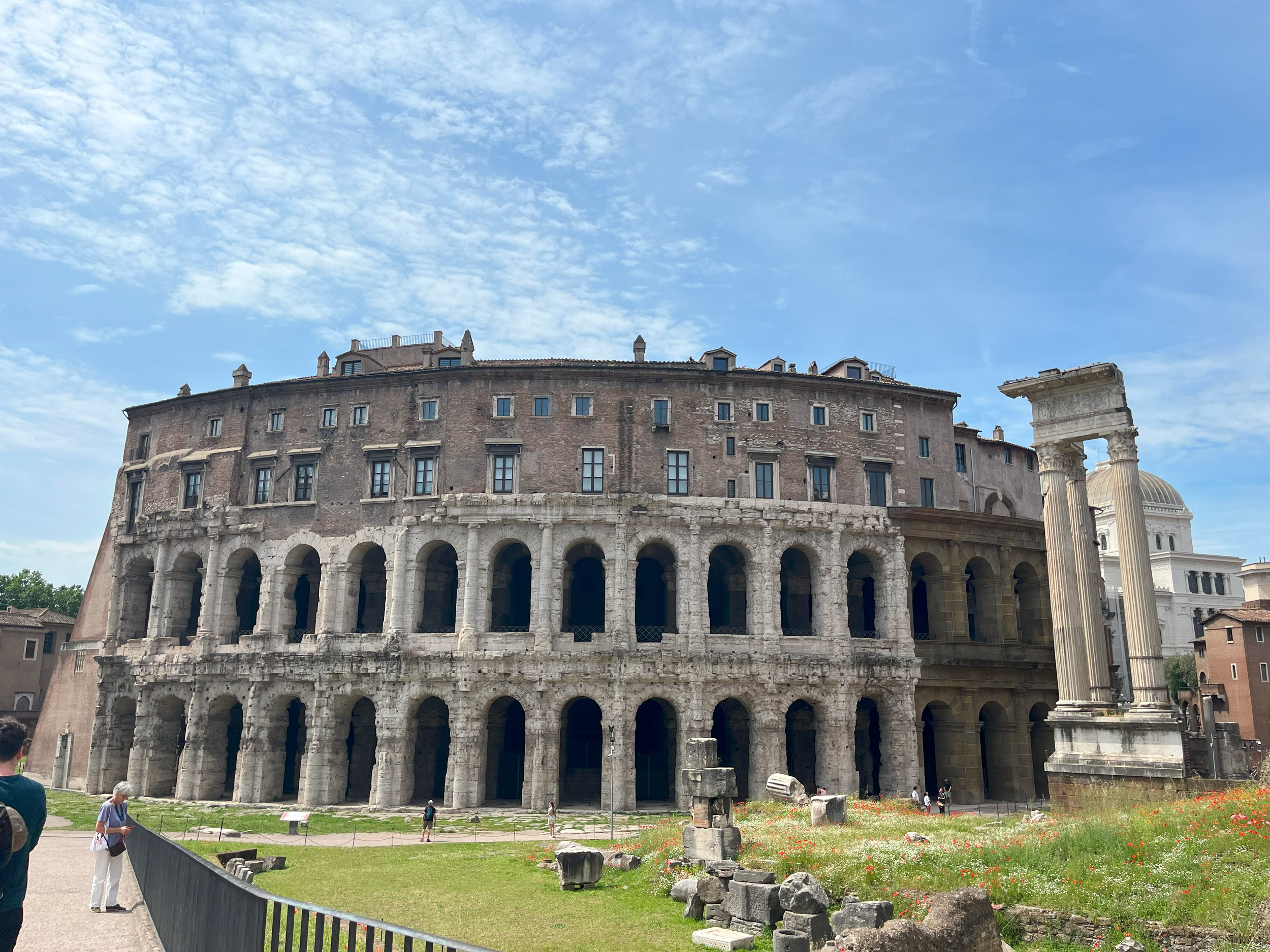
Theater of Marcellus. Photographed by Luke Lynch.
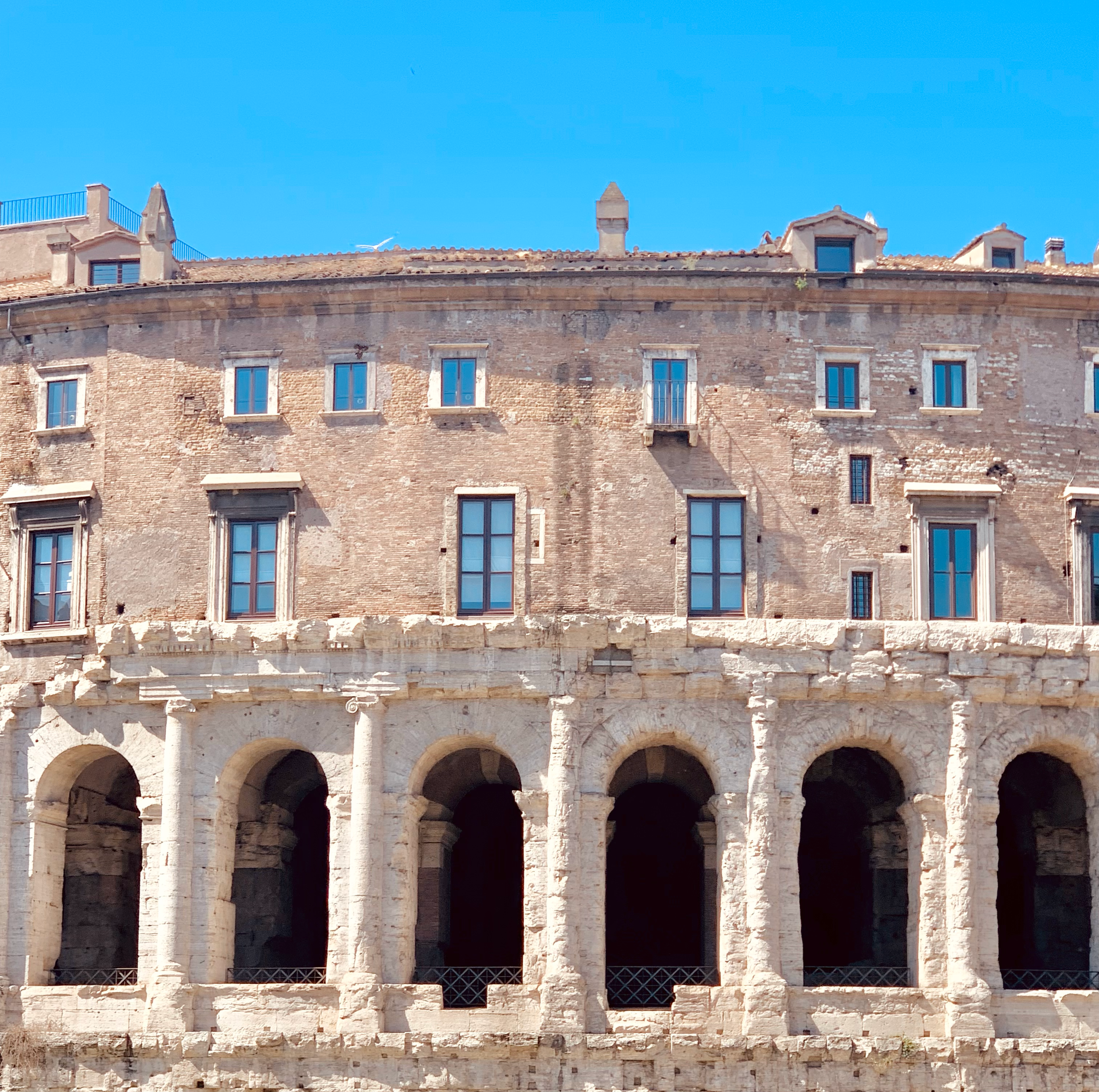
Theater of Marcellus. Photographed by Reid Graham.
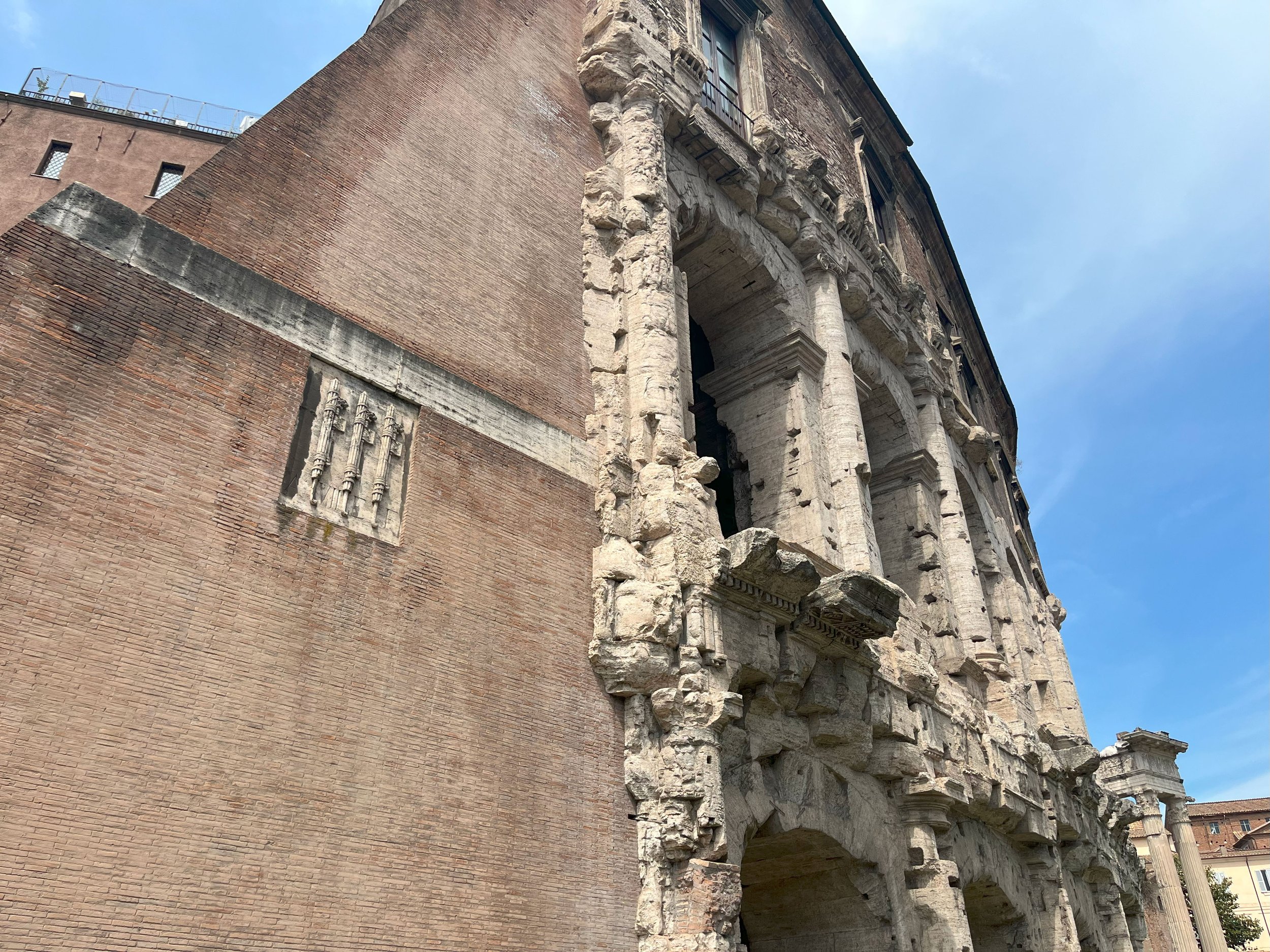
Fascist iconography visible on Theater of Marcellus facade. Photographed by Lucy Martin.
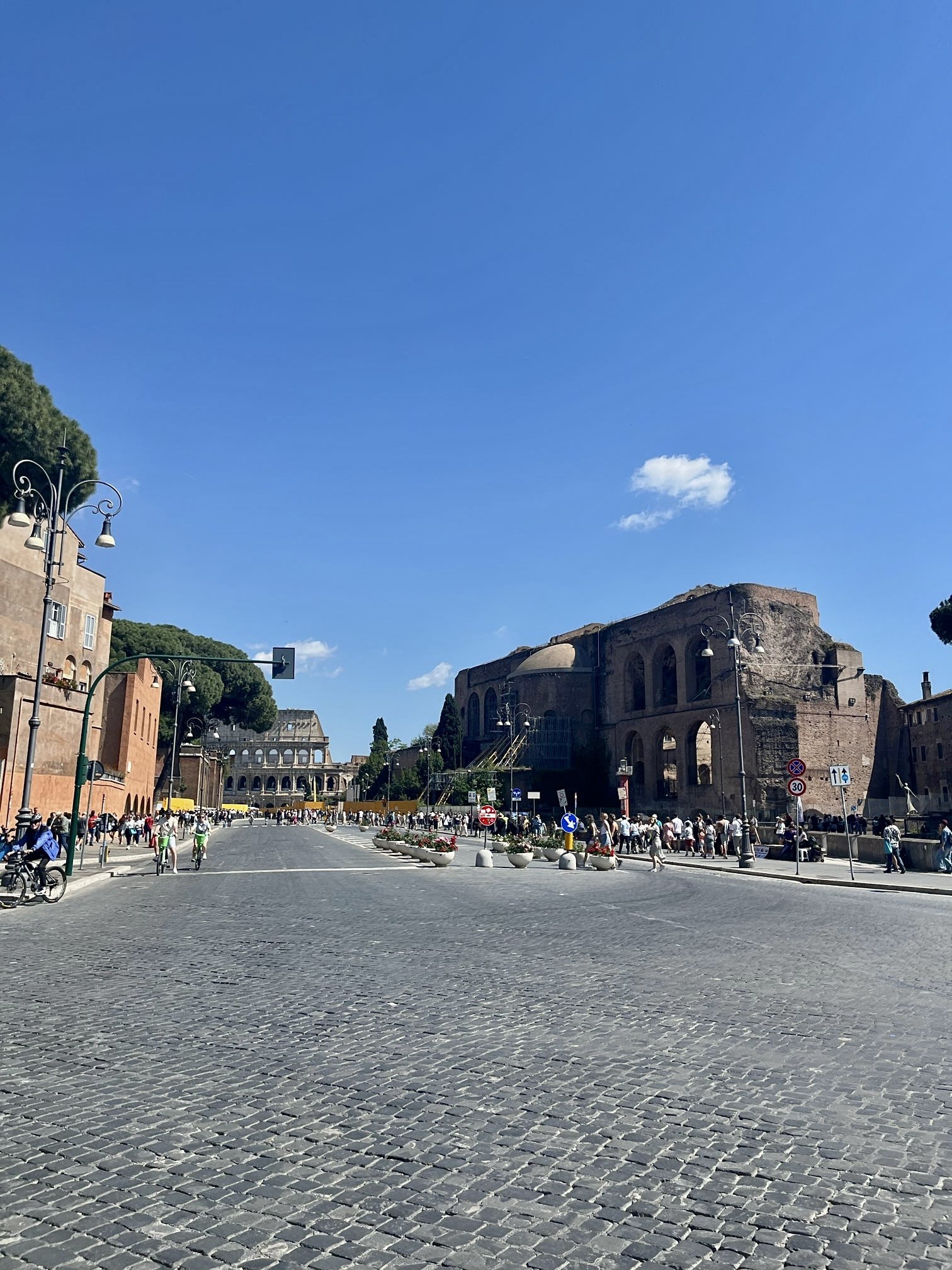
Via del'Impero facing the Colosseum. Photographed by Audrey Huhn.
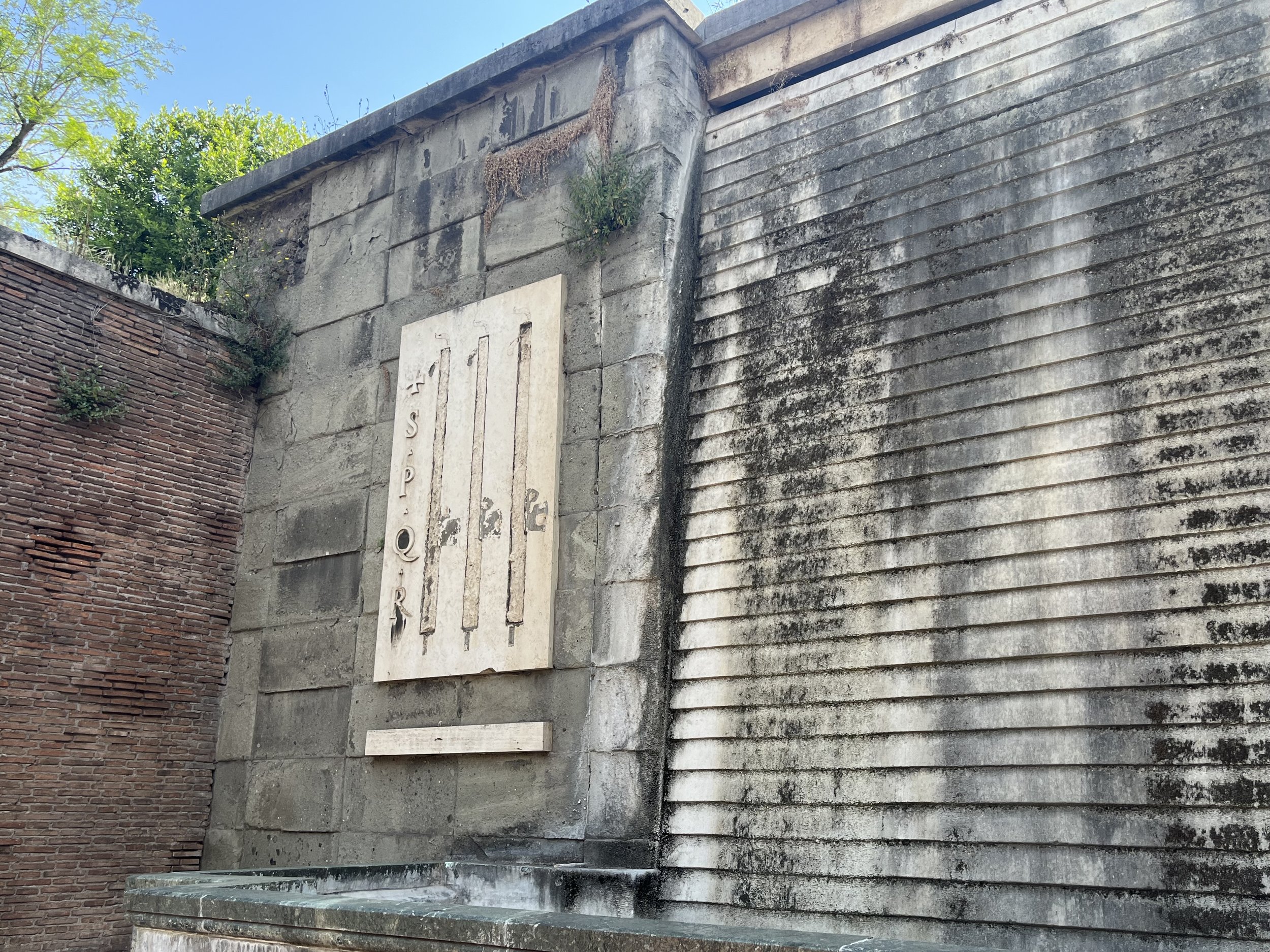
Fasces symbol located along the Via dei Trionfi (Via di San Gregorio). Photographed by Reid Graham.

View down the Via dell'Impero. Photographed by Makenna Karst.
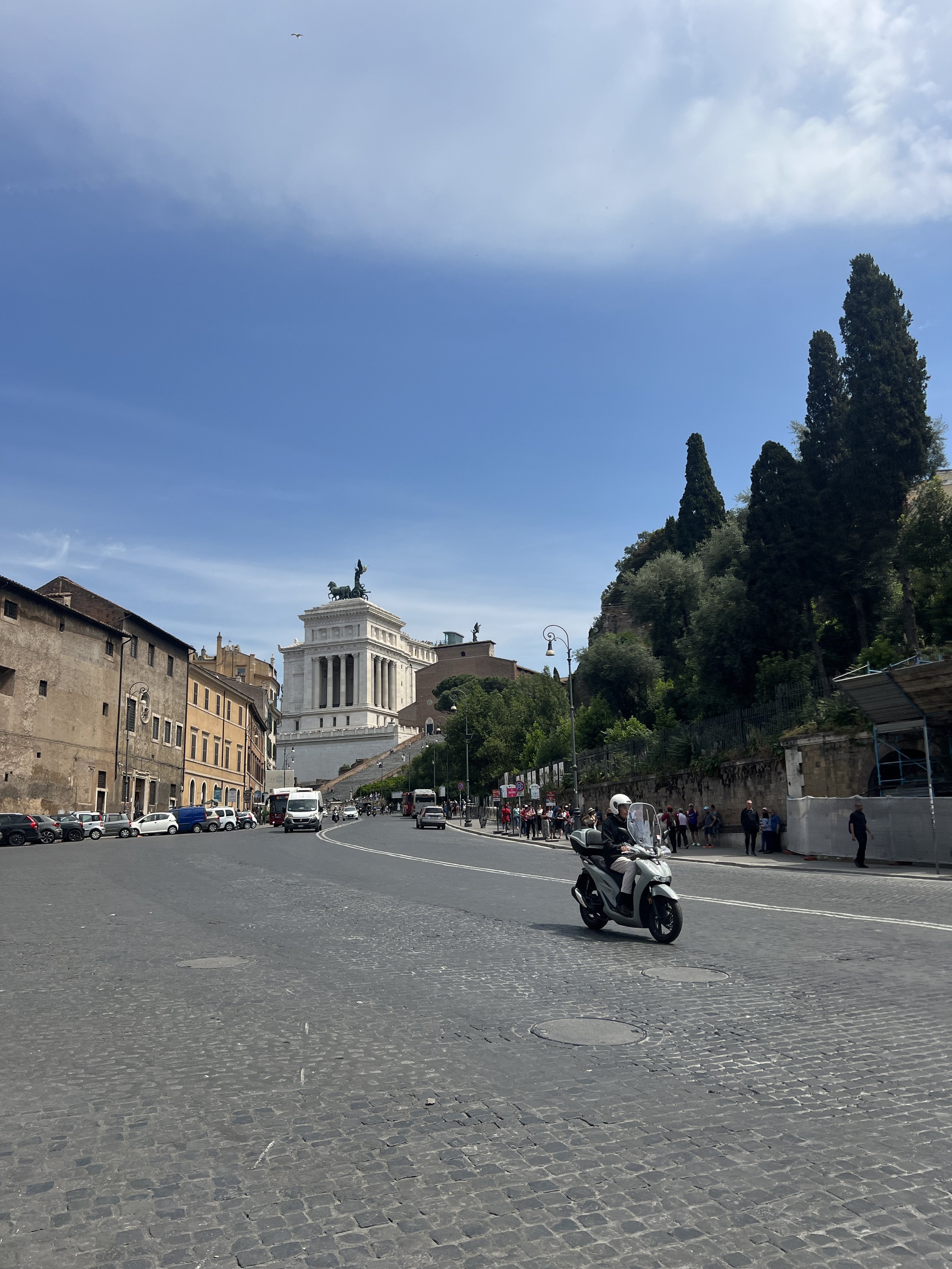
View along the Via del Mare. Photographed by Makenna Karst.
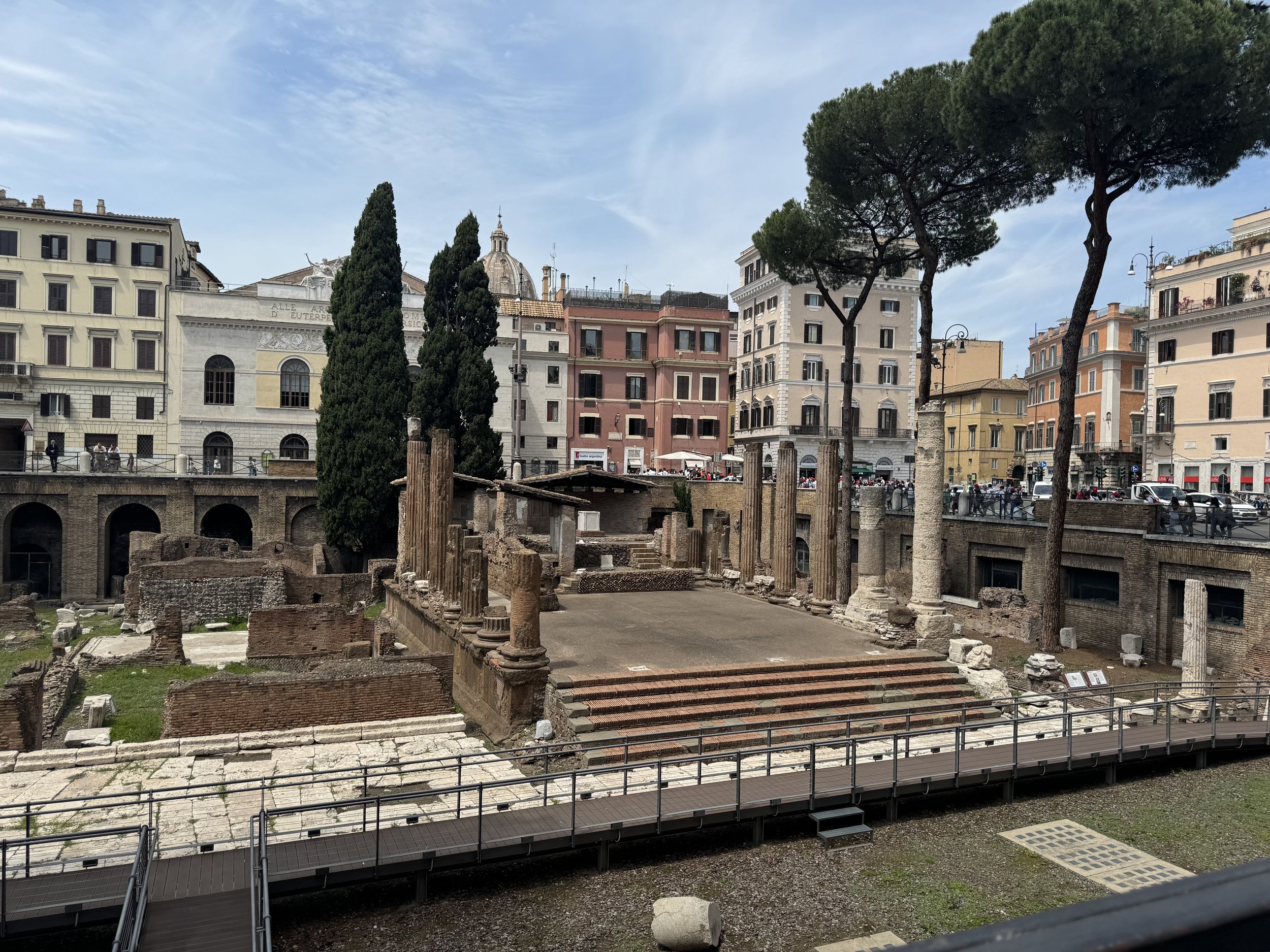
Largo Argentina. Photographed by Peter Ankerberg.
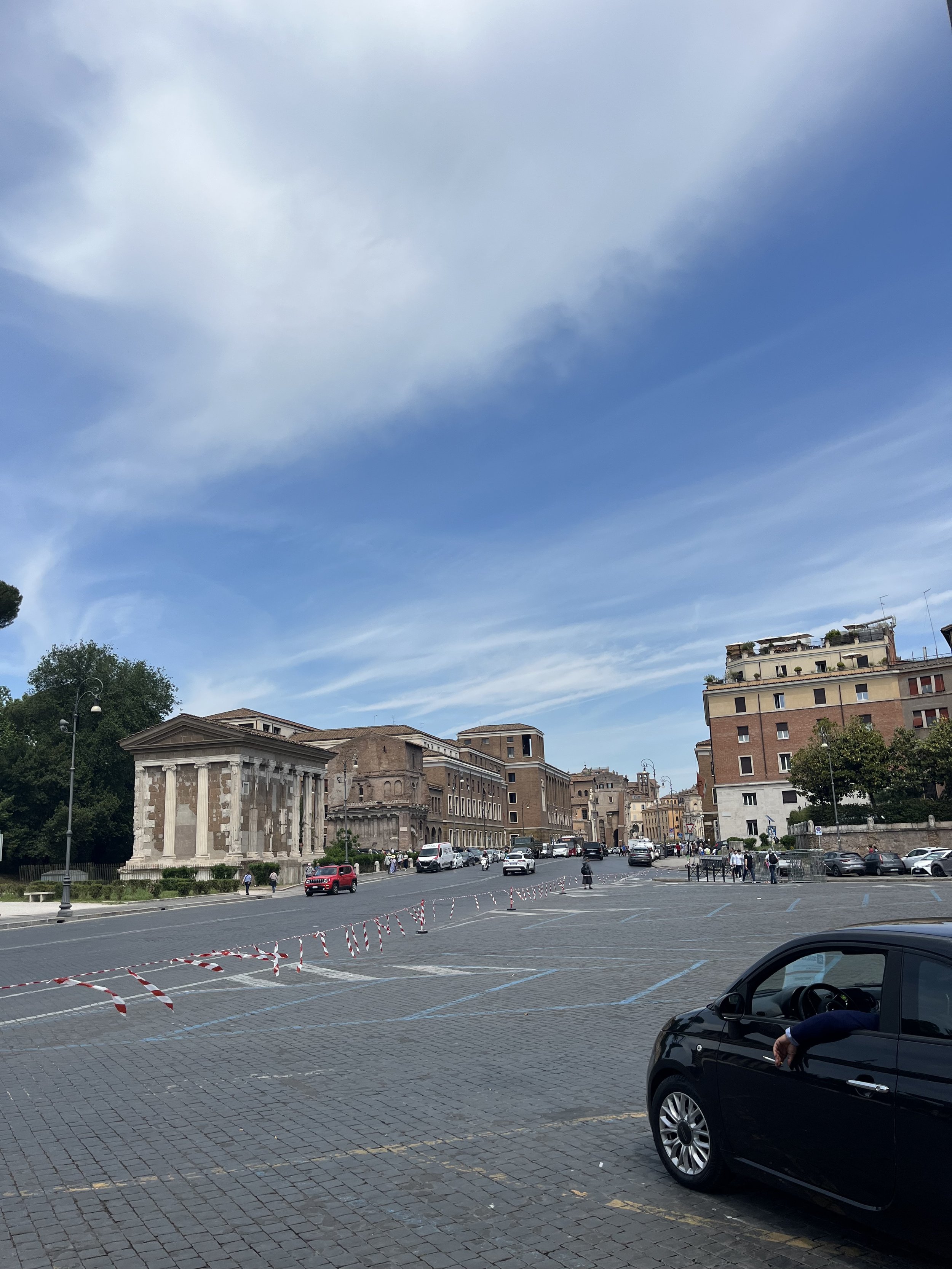
View down the Via del Mare. Photographed by Luke Lynch.
Site 2- Archeology & the Empire
The walkthrough of the Roman Forum with archeologist and professor, Jan Gadeyne, allowed us to delve deeper into the Ancient Roman Empire. It also allowed for us to gain a deeper understanding into the regime’s goals of connecting themselves to ancient rulers such as Augustus, yet simultaneously asserting their dominance over them. Much of the Forum was carved out by the regime, and it is sliced by the Via dell’Impero (Via dei Fori Imperiali). Throughout the forum, there are moments of slight intervention that are likely to go unnoticed by most. This is different from other sites where intervention is clear. This is where we can begin to observe the choices made by the regime, that being slight or unnoticeable intervention to blatant or total reconstruction efforts. This site allowed for a further connection into Ancient Rome and their imperial rule, as well as how this idea of romanità or Romanness was being embraced.
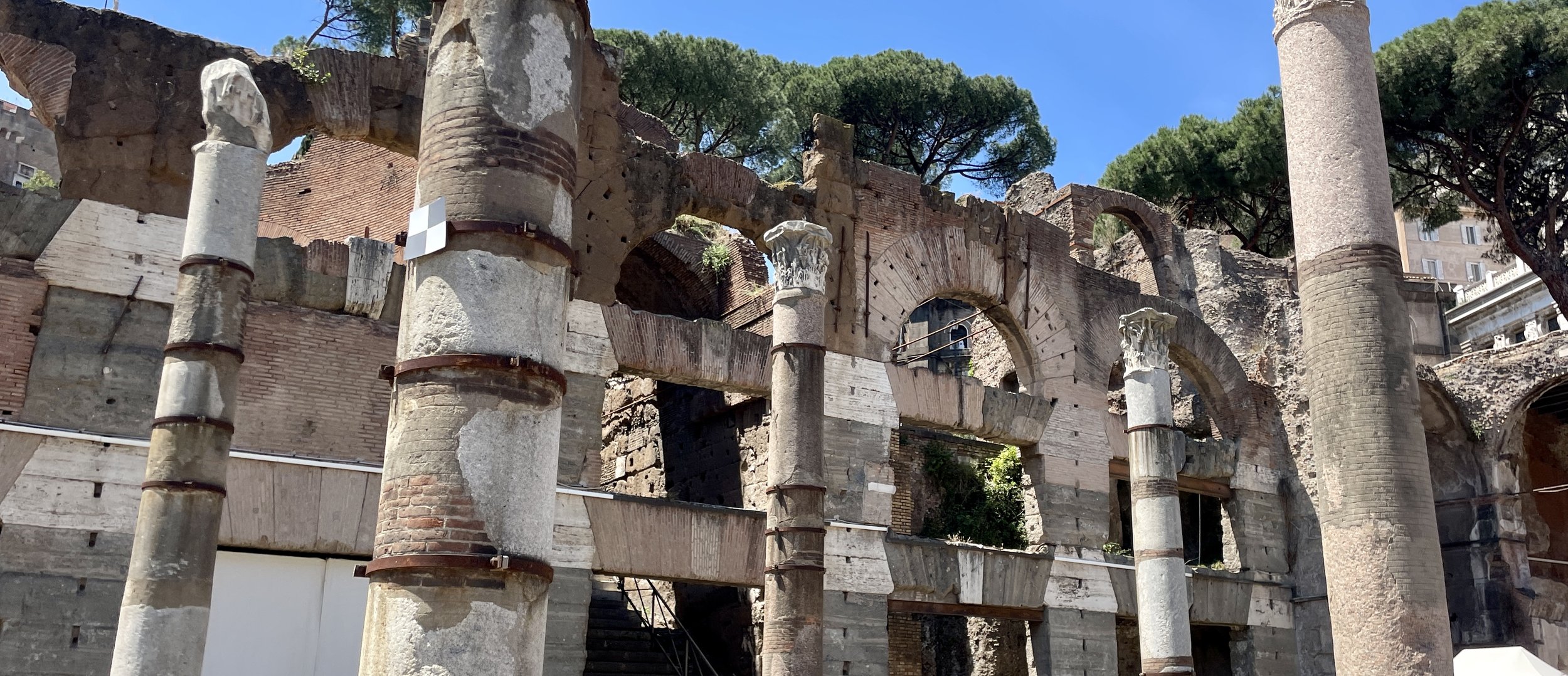
Roman Forum. Photographed by Erin Hobbs.
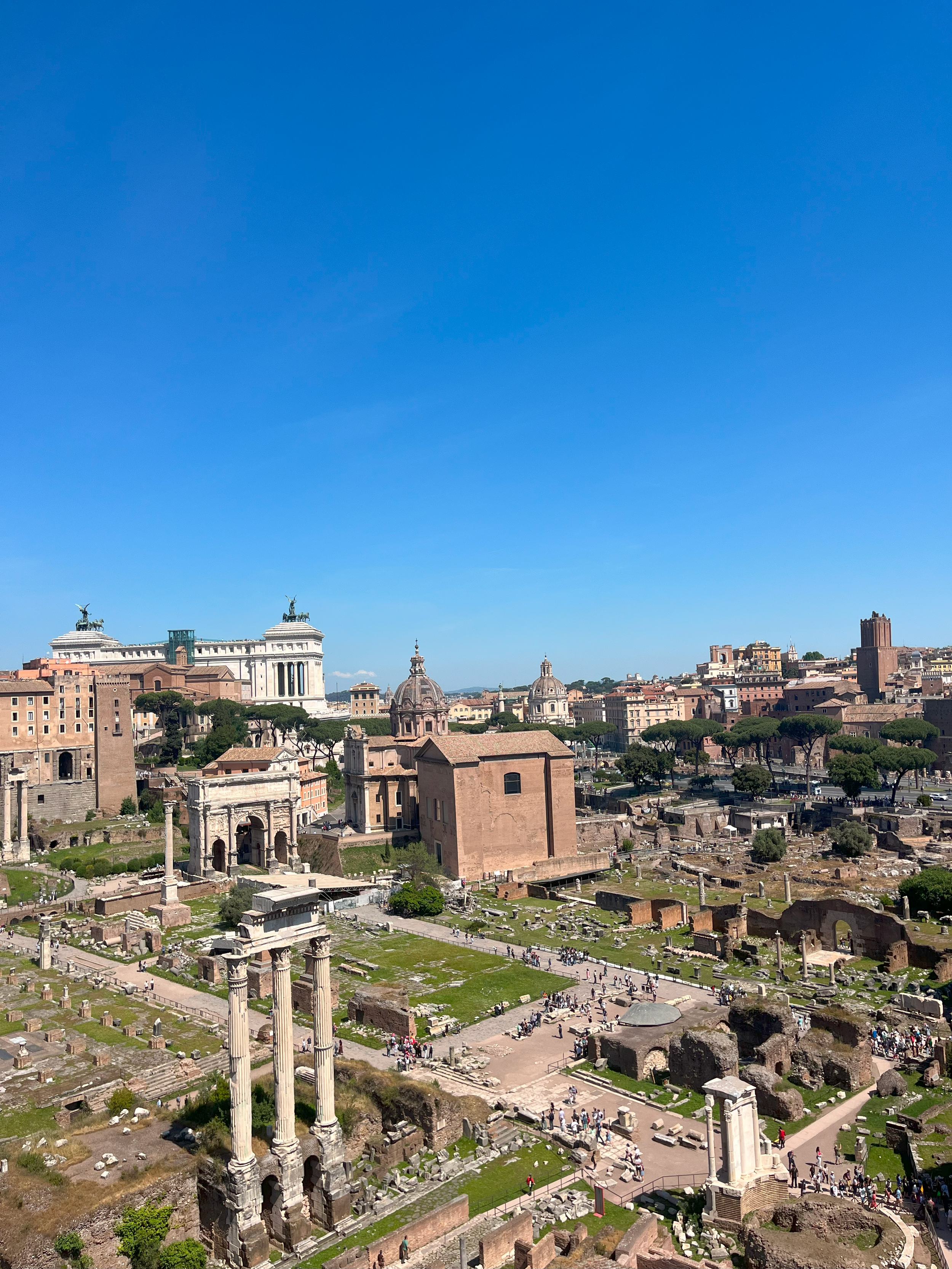
View from the top of the Palatine Hill overlooking the Forum, Vittorio Emmanuel monument, and the Via dell'Impero. Photographed by Luke Lynch.
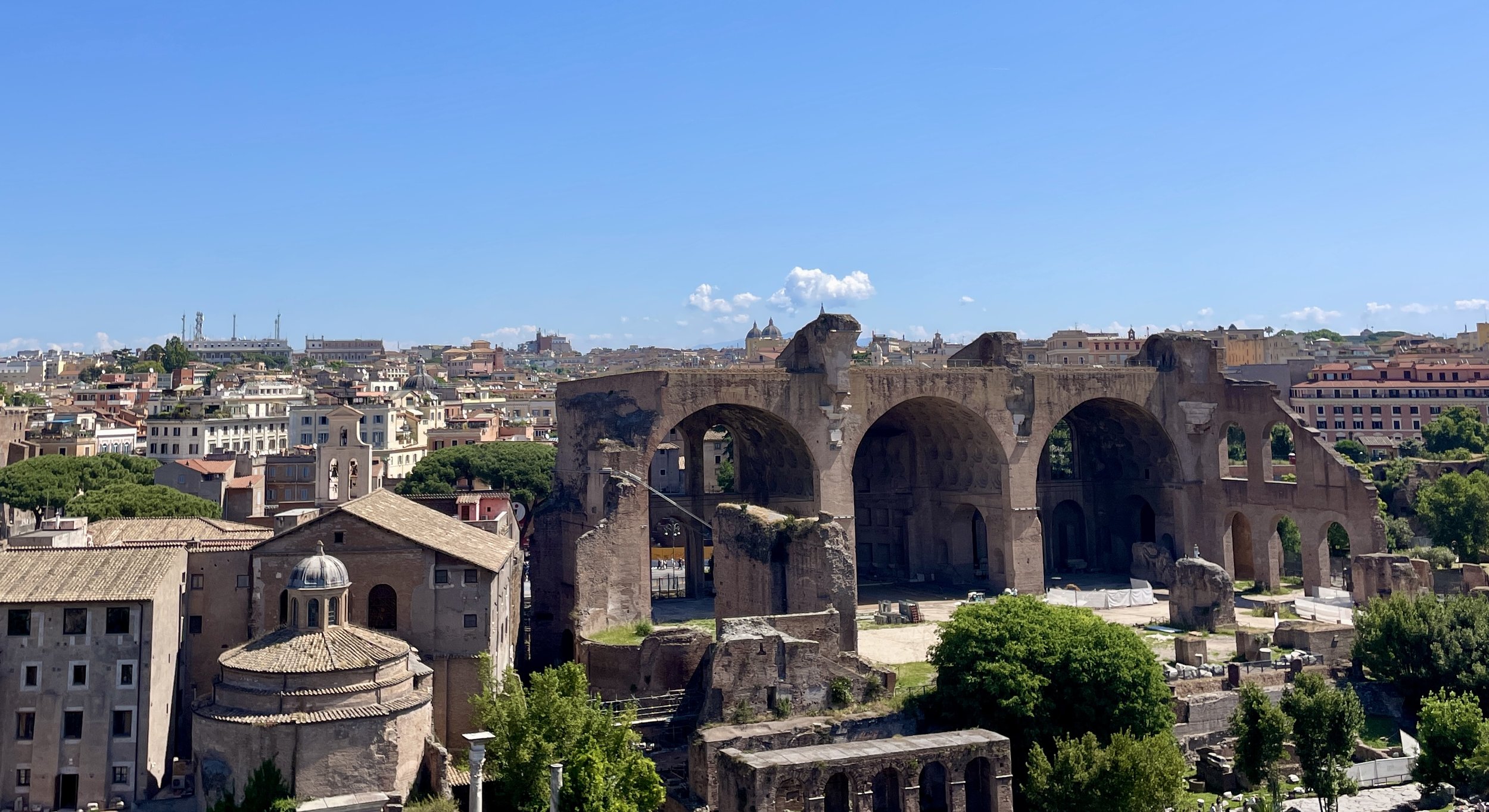
Basilica of Maxentius, Roman Forum. Photographed by Erin Hobbs.
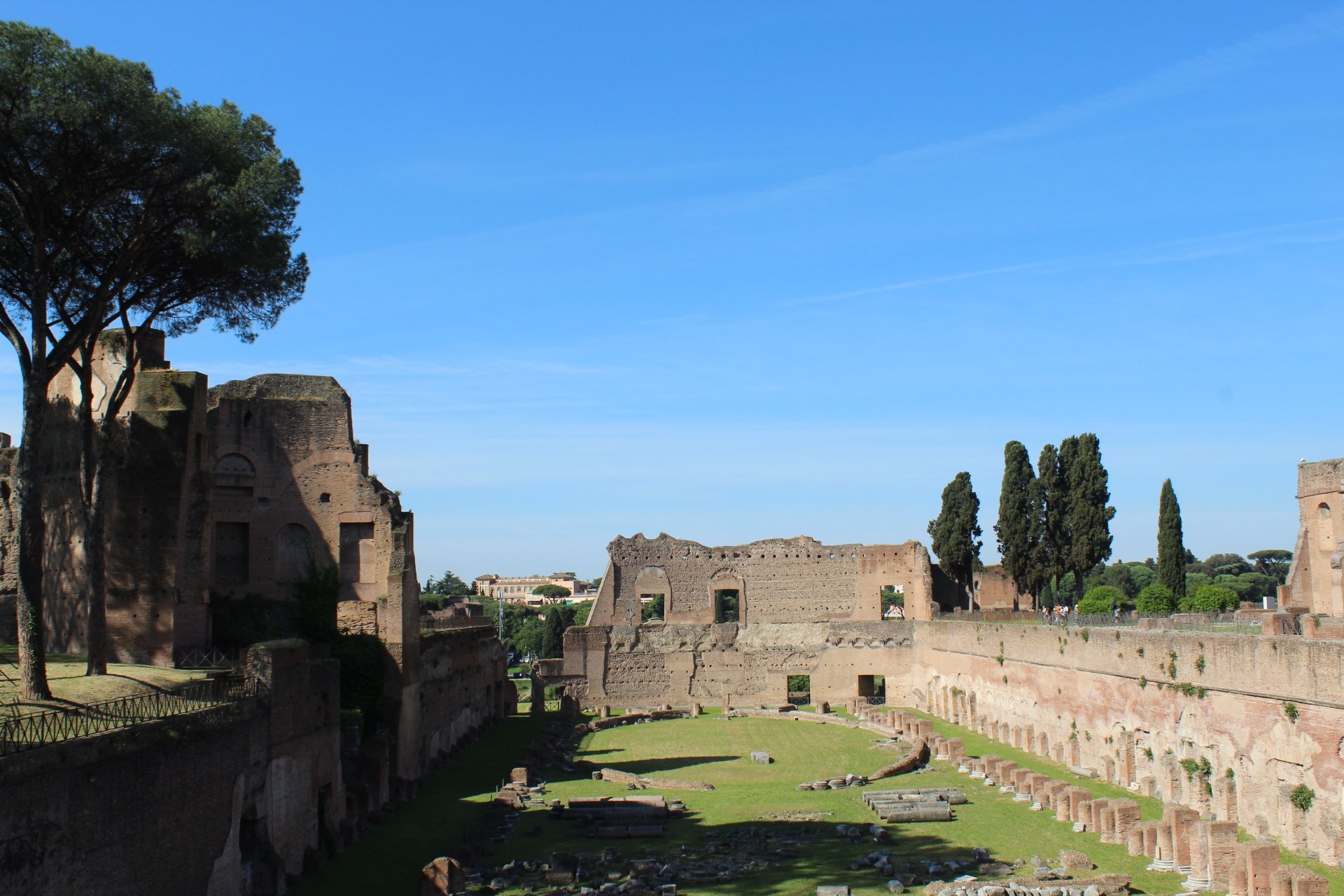
Private garden at the Roman Forum. Photographed by Devin Chaldecott.

Roman Forum framing modern-day Rome. Photographed by Sanya Berry.
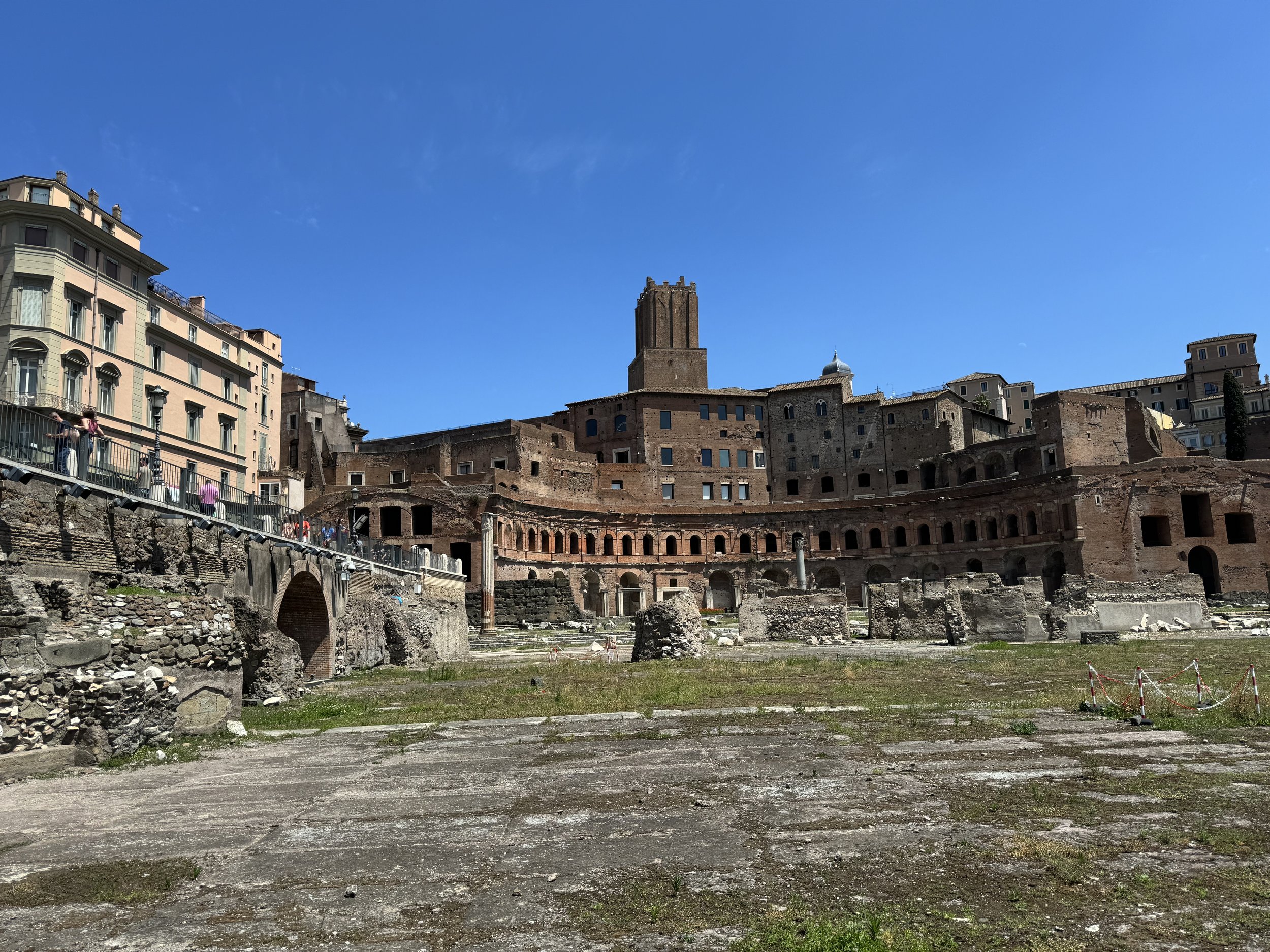
Trajan's Market at the Roman Forum. Photographed by Peter Ankerberg.
Site 3- Resurrecting Augustus
While we have primarily seen moments of excavation or reconstruction carried out by the regime, there are also full-scale relocation projects. The Ara Pacis or Altar of Peace was excavated and relocated from Via in Lucina to Piazza Augusto Imperatore. A location closer to the Mausoleum of Augustus, which had also been “liberated” or excavated from 1926-1930 by the regime. These two projects were to be completed in order to celebrate the 2000th anniversary of Augustus’ birth. This project and celebration created a personal association between Augustus and Mussolini. Located in the vicinity is the Bulgari Hotel. It occupies a building that was constructed and designed by Vittorio Ballio Morpurgo who had also redesigned the square surrounding the Mausoleum. The hotel building was formerly used by the Fascist regime and a statue of Augustus and Fascist symbols remain in and on the building and signify the ownership and claiming of the site by the regime.
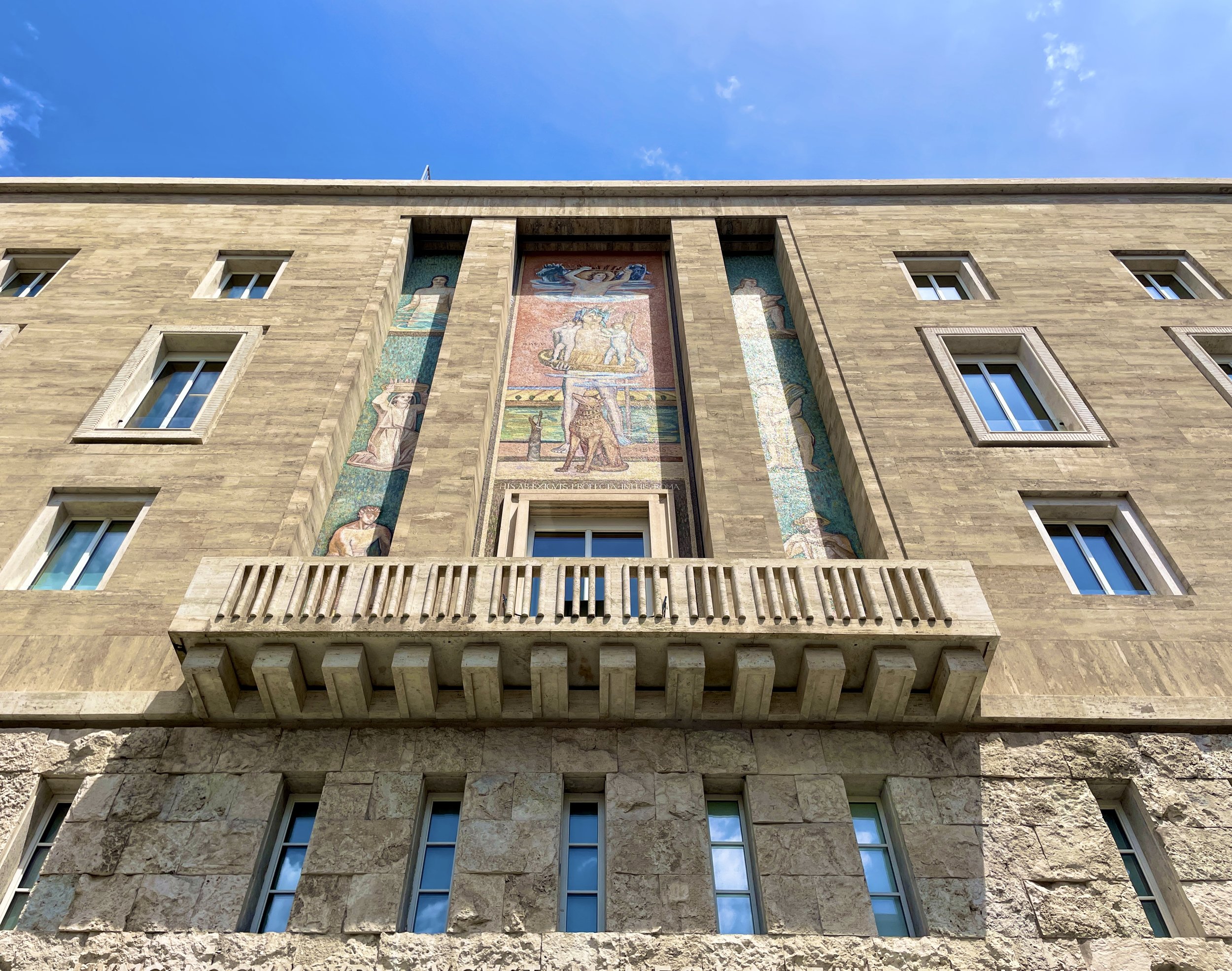
Fascist mosaics restored on the facade of Bulgari hotel. Photographed by Erin Hobbs.

Statue of Augustus inside the lobby of the Bulgari Hotel. Photographed by Makenna Karst.
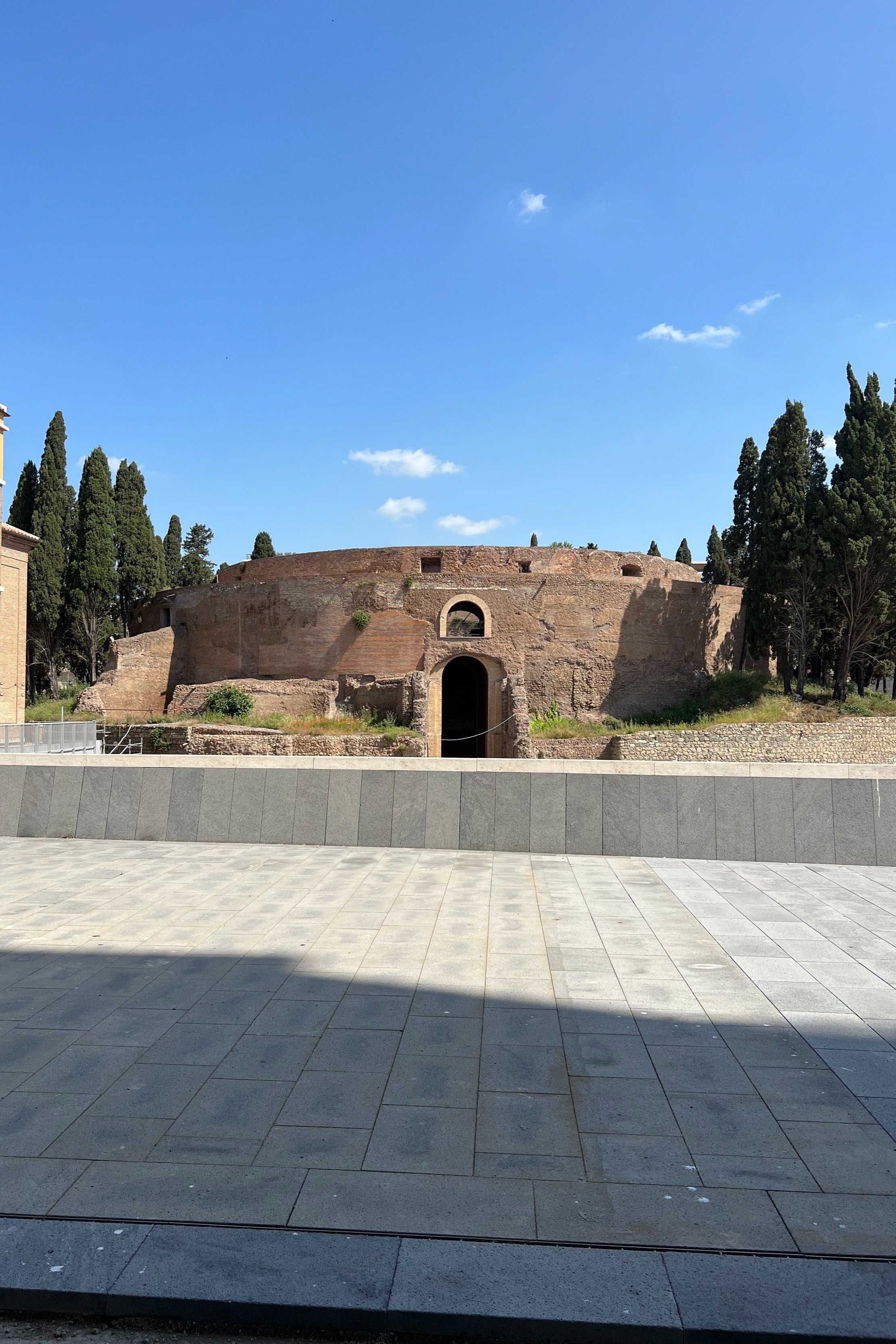
Mausoleum of Augustus. Photographed by Devin Chaldecott.

Ara Pacis, Altar of Peace. Photographed by Makenna Karst.
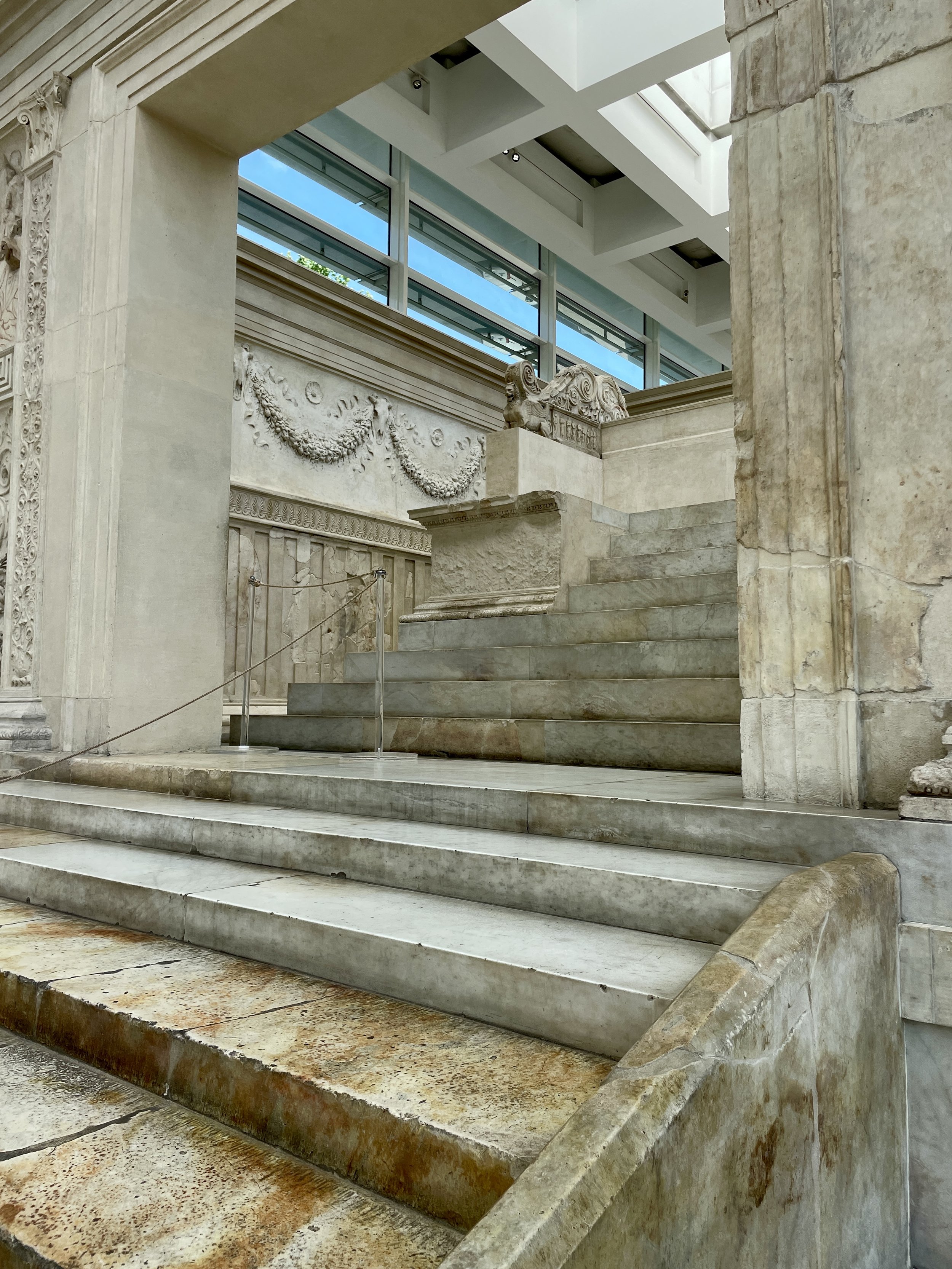
Interior of the Ara Pacis, Altar of Peace. Photographed by Erin Hobbs.
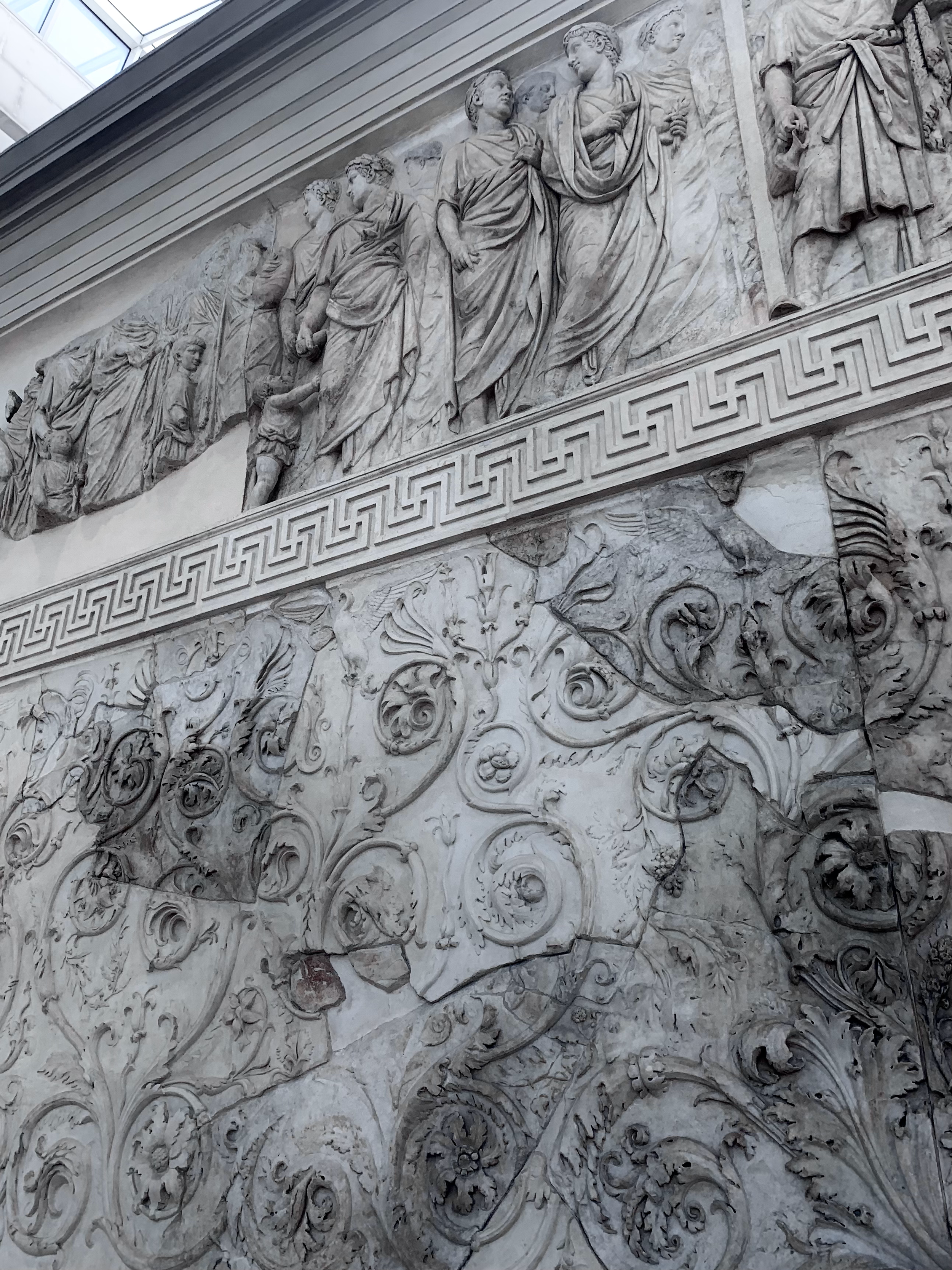
Materiality of the Ara Pacis. Photographed by Reid Graham.
Site 4- The Ancient City
Located along the Tiber River but closer to the Mediterranean is the ancient port city of Ostia Antica. Further away from the city, it consisted of housing, markets, theaters, and other buildings used for daily life. However, Ostia also represented a move closer toward the sea, and therefore expansion to and throughout the Mediterranean. While it served as an import site for goods and trade, more importantly to the empire and the regime it represented imperialist goals of expansion. Under Mussolini's regime they restored and excavated two thirds of Ostia Antica from 1938-1942. Materiality differences can be noticed throughout the site, with newer bricks and stones being part of the regime’s intervention. The Mediterranean allowed for endless imperialistic expansion, and Ostia Antica served as the gateway for both the Ancient Roman Empire and the Fascist regime.
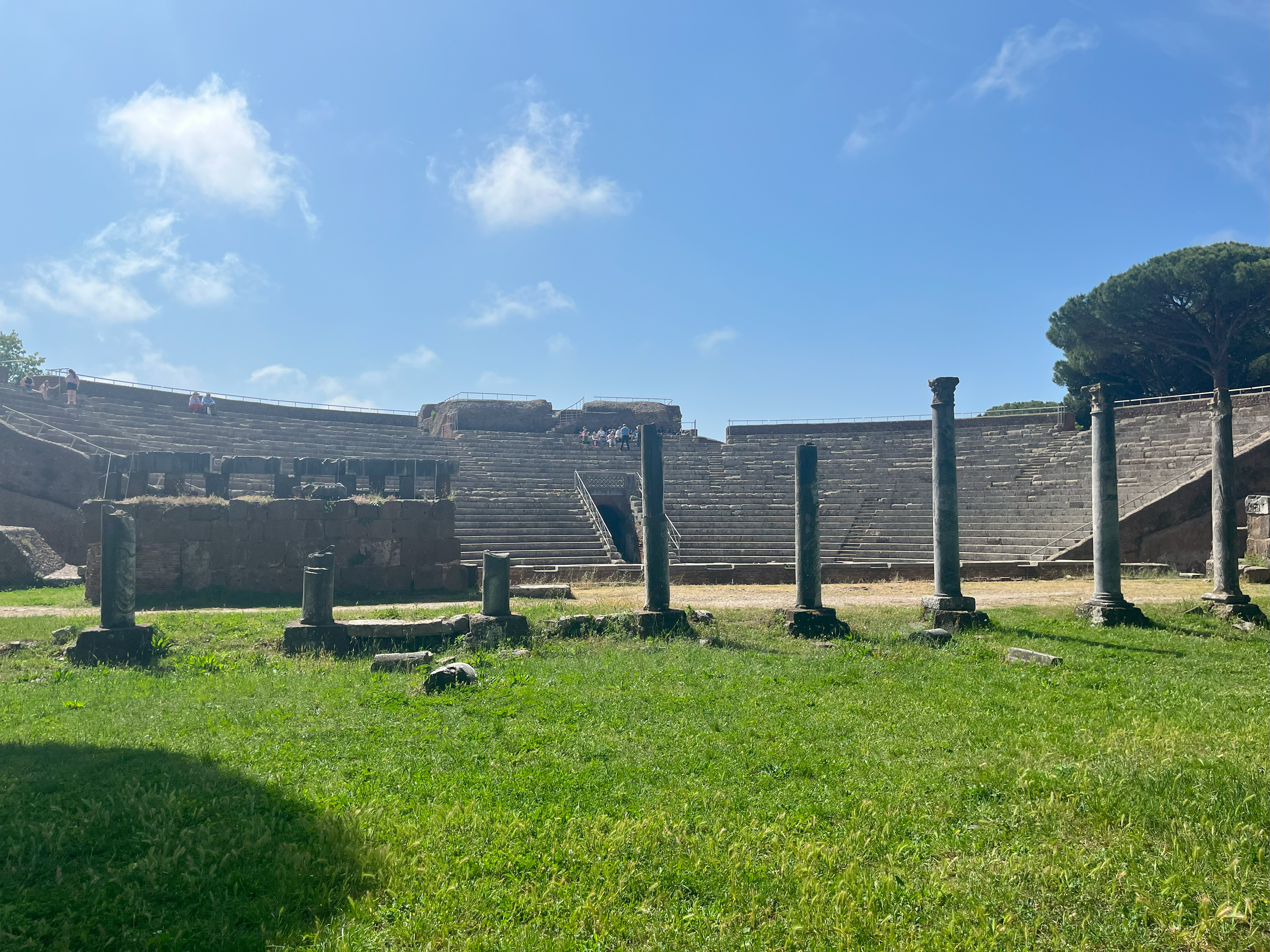
Theater at Ostia Antica. Photographed by Luke Lynch.
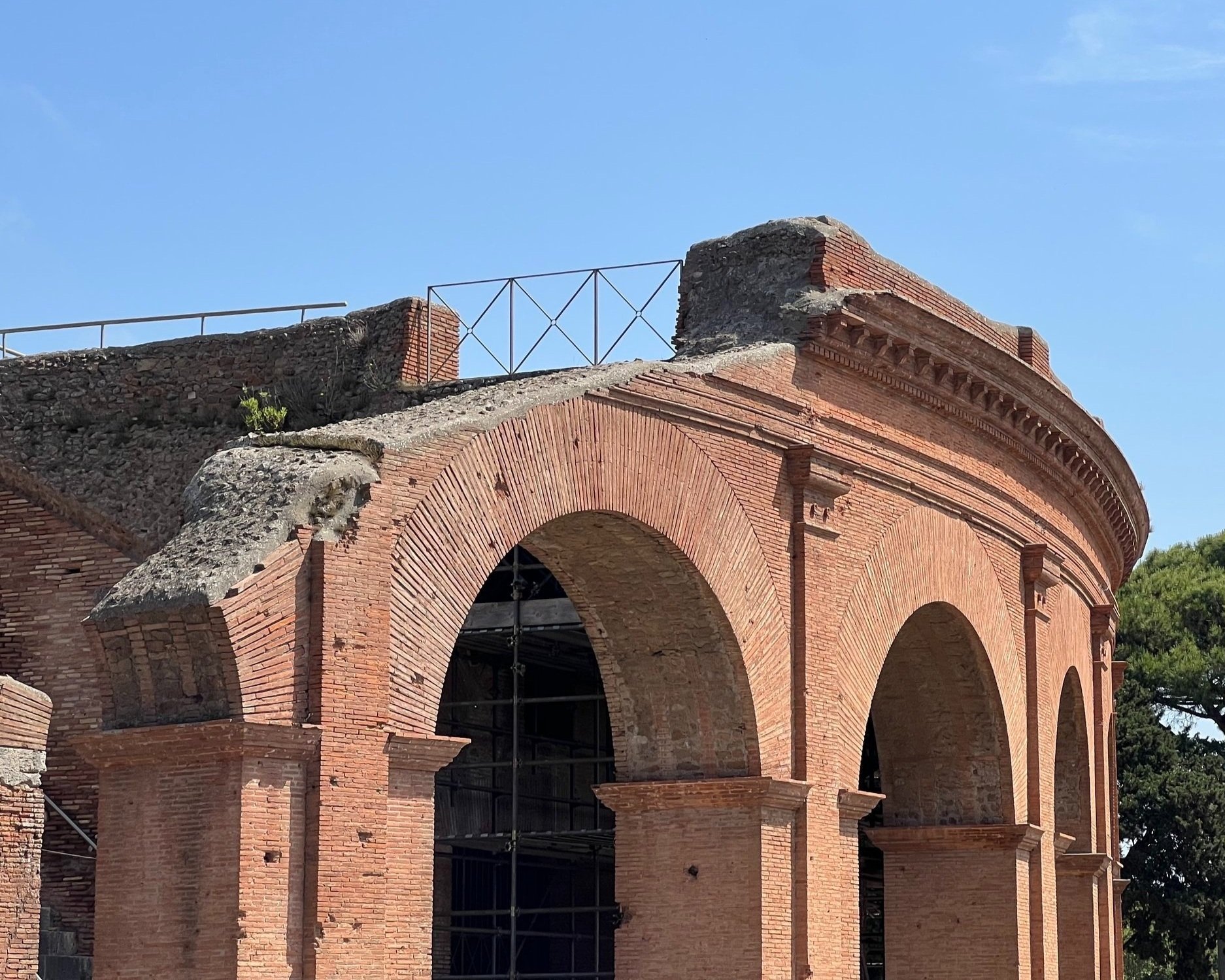
Rebuilt section of theater at Ostia Antica. Photographed by Devin Chaldecott.
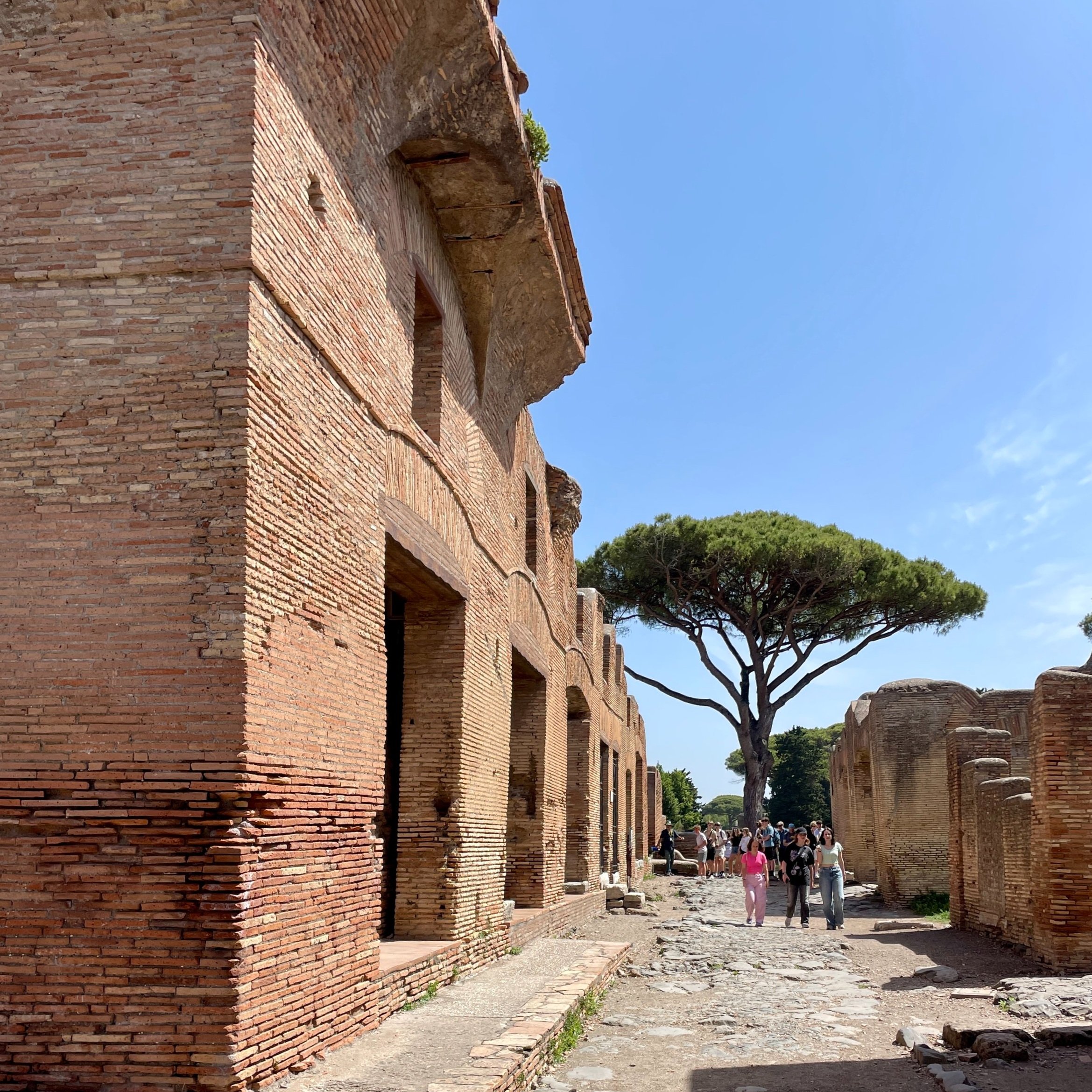
Streets of Ostia Antica. Photographed by Erin Hobbs.
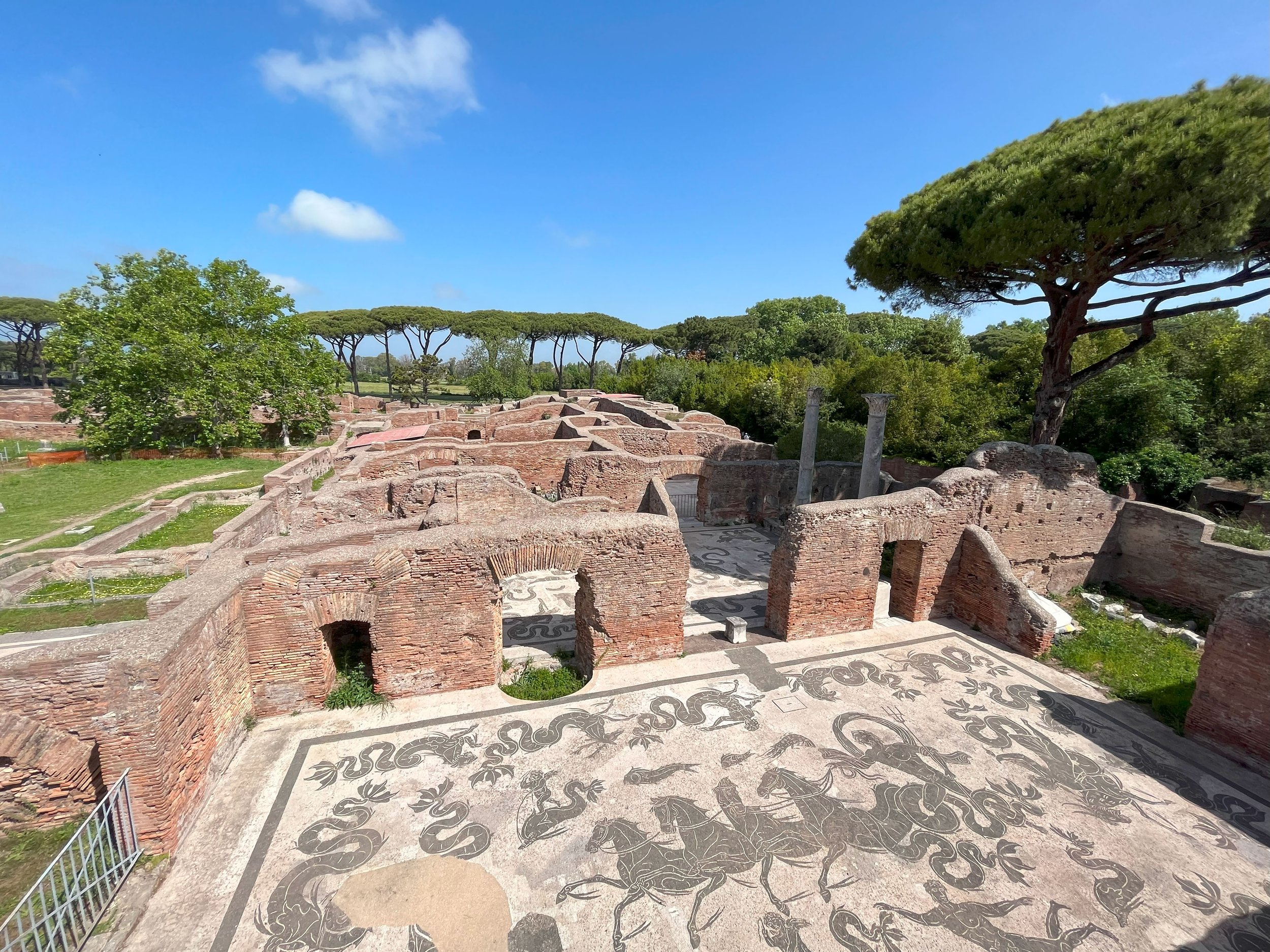
Bath house mosiacs at Ostia Antica. Photographed by Luke Lynch.
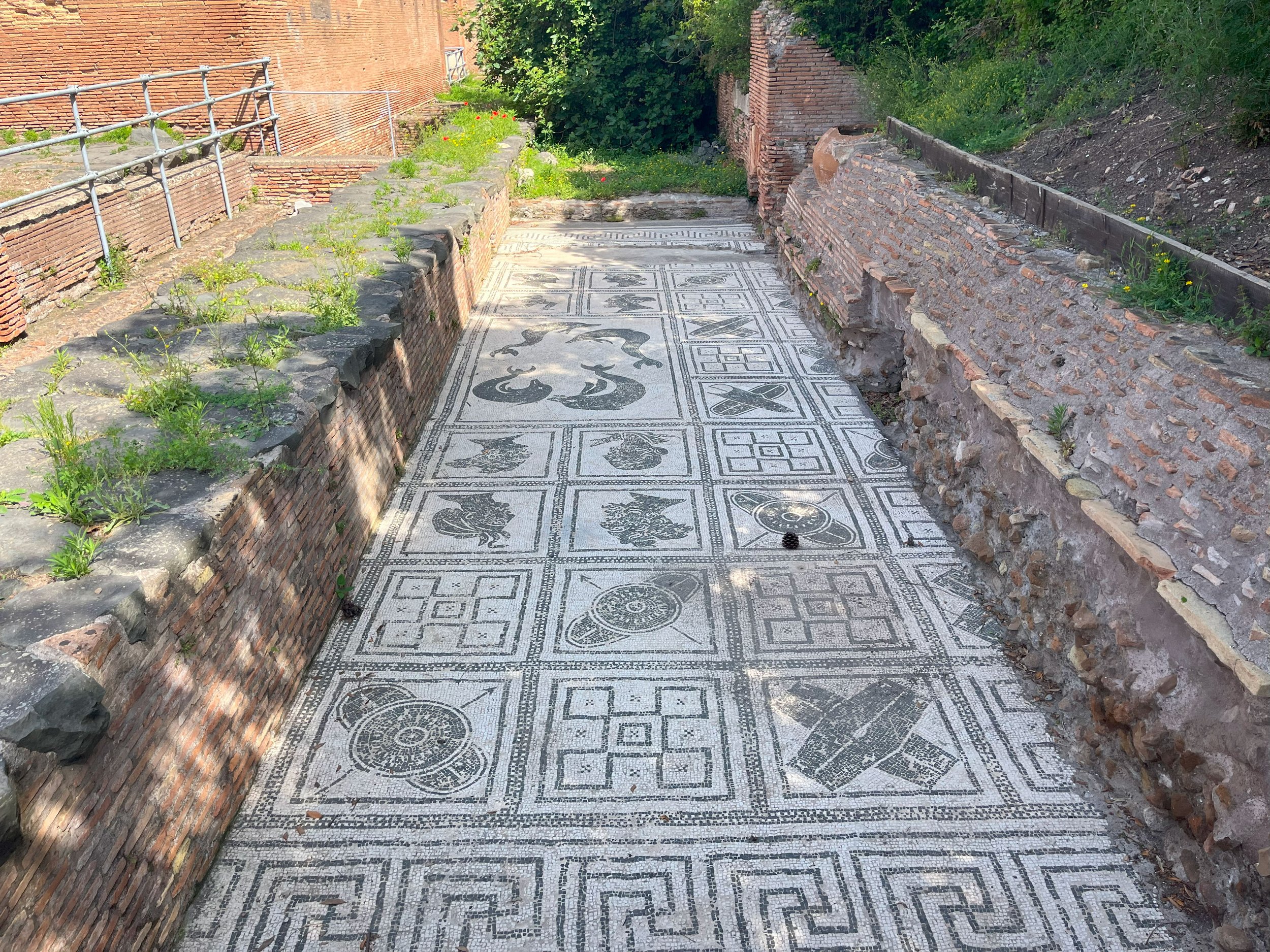
Commonly found black and white mosaics at Ostia Antica. Photographed by Luke Lynch.
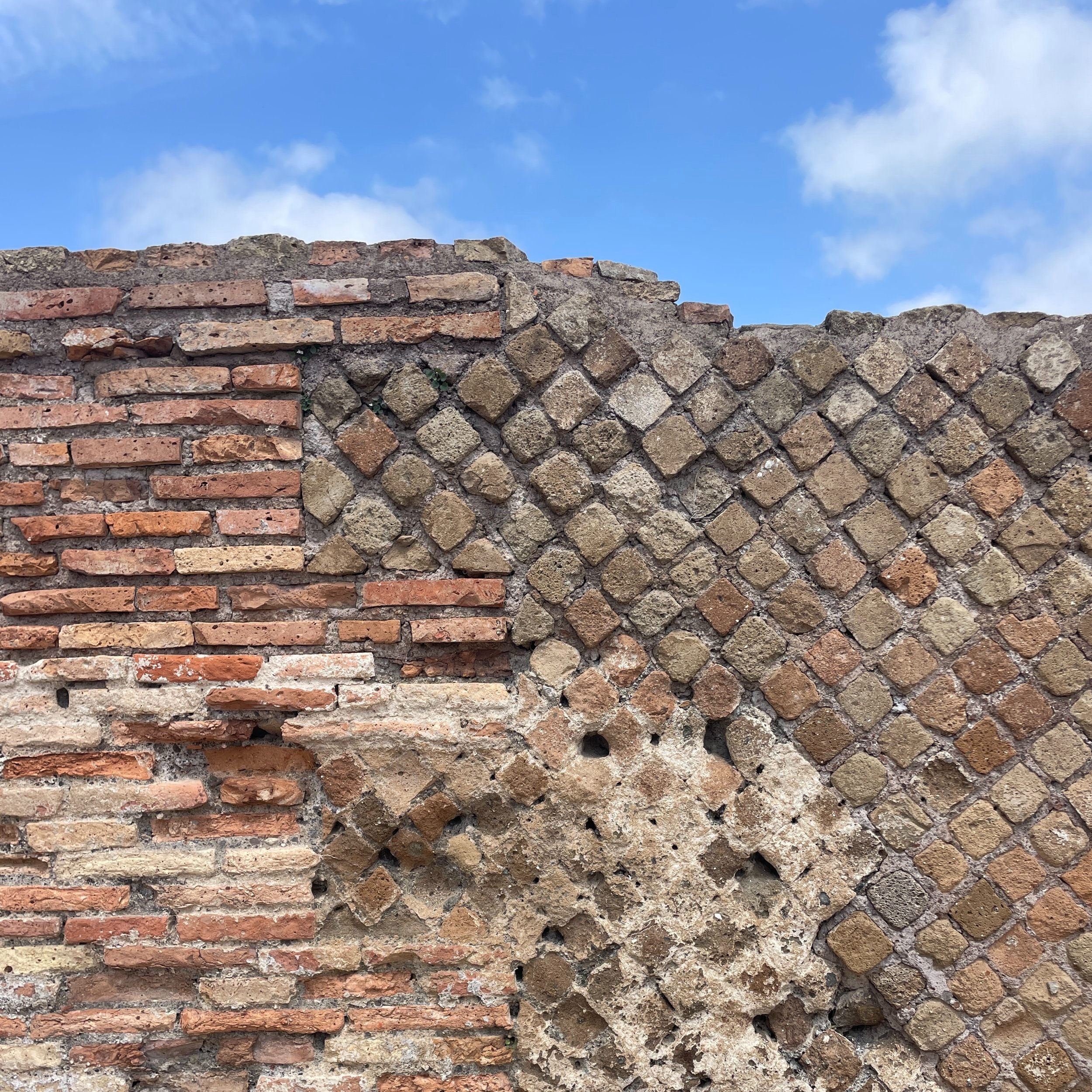
Ostia Antica's materiality over time. Photographed by Erin Hobbs.
Site 5- Deceptive Restoration
The Basilica of Santa Sabina was constructed in the 5th century from 422-432, however among other modifications throughout the time it has received two separate restoration projects led by Antonio Muñoz. This first occurred throughout the First World War, and he reversed many Baroque additions made under Pope Sixtus V and by Domenico Fontana in an attempt to return the church to its medieval phase as he saw the modifications he made to be too cold and severe. The large apse was modified, two arches were walled in, and windows were opened, yet some of the decorative Baroque elements along the sides remained as they could have been covered. The second phase occurred during the 1930s when Muñoz was actively working under the regime as the head of Rome’s Department of Antiquities and Fine Arts. This intervention aimed to return the basilica to its 5th-century appearance and embrace its Romanness, however, the restoration rather followed more along the lines of a modernist approach reflected by marble in the apse or completely new flooring. This site has created sharp tensions around the notion of this being a restoration project or a promotion of the agenda led by the Fascist regime.
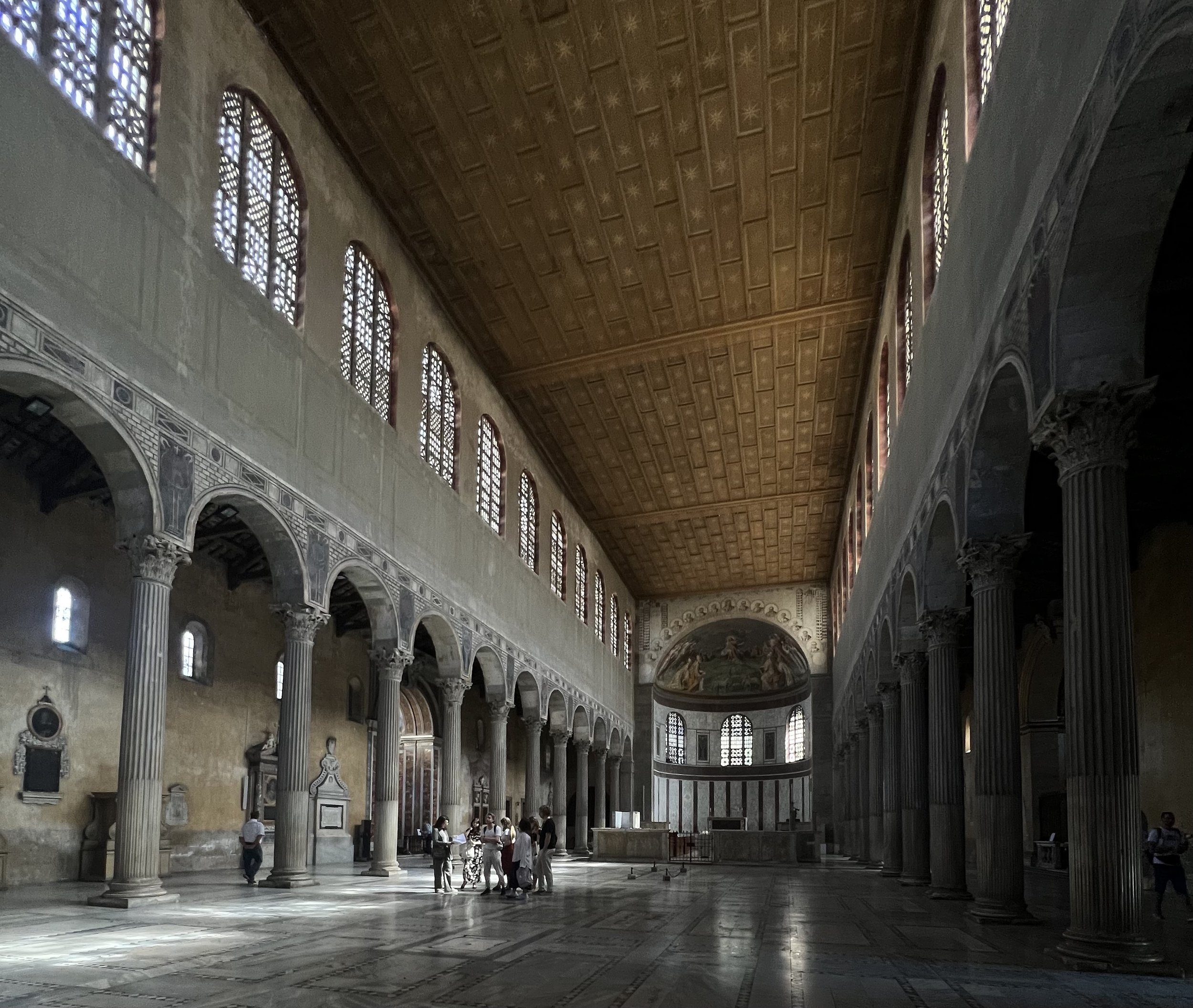
Overall view of Santa Sabina. Photographed by Devin Caldecott.
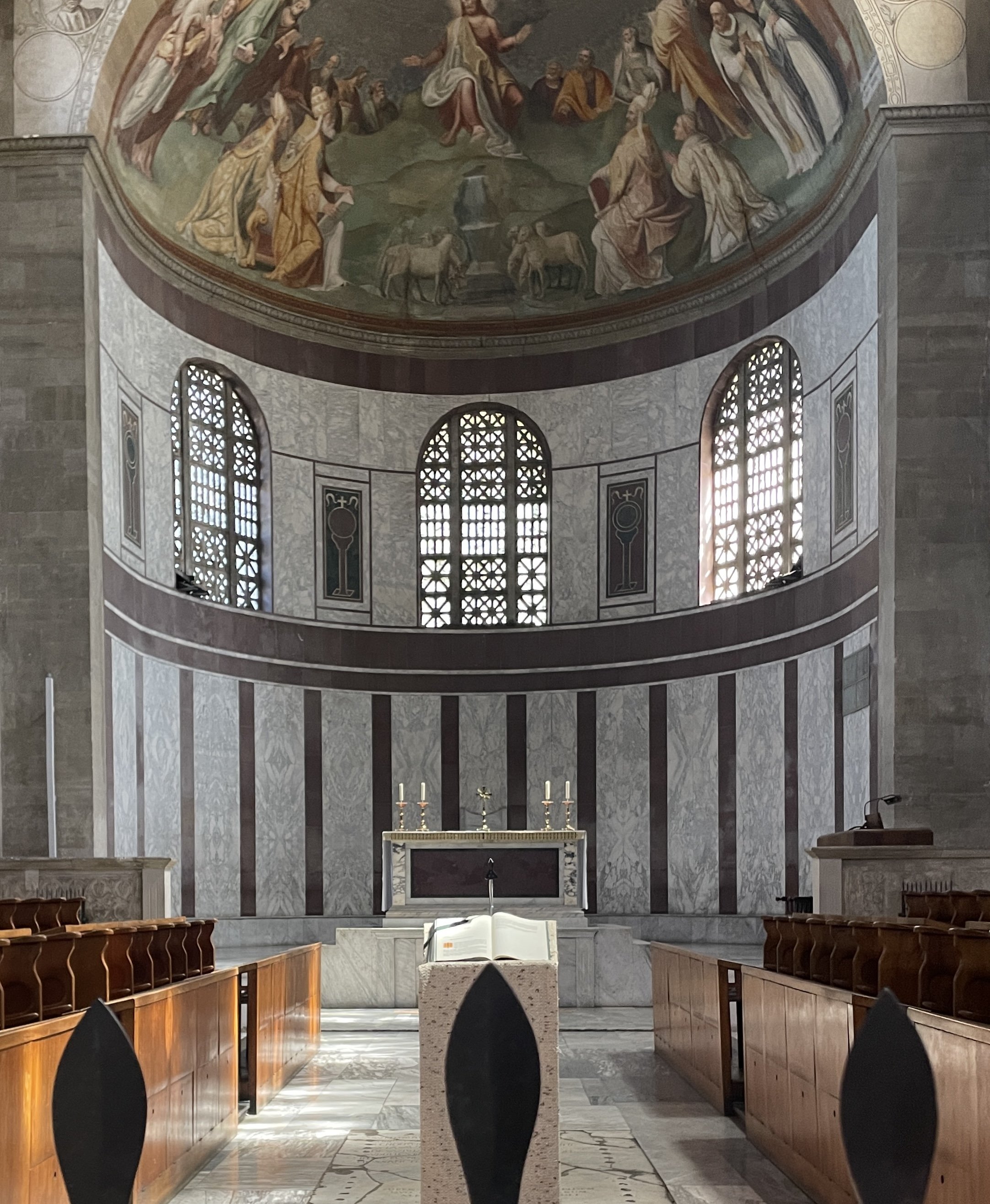
Fascist-era apse covered in marble slabs at Santa Sabina. Photographed by Erin Hobbs.
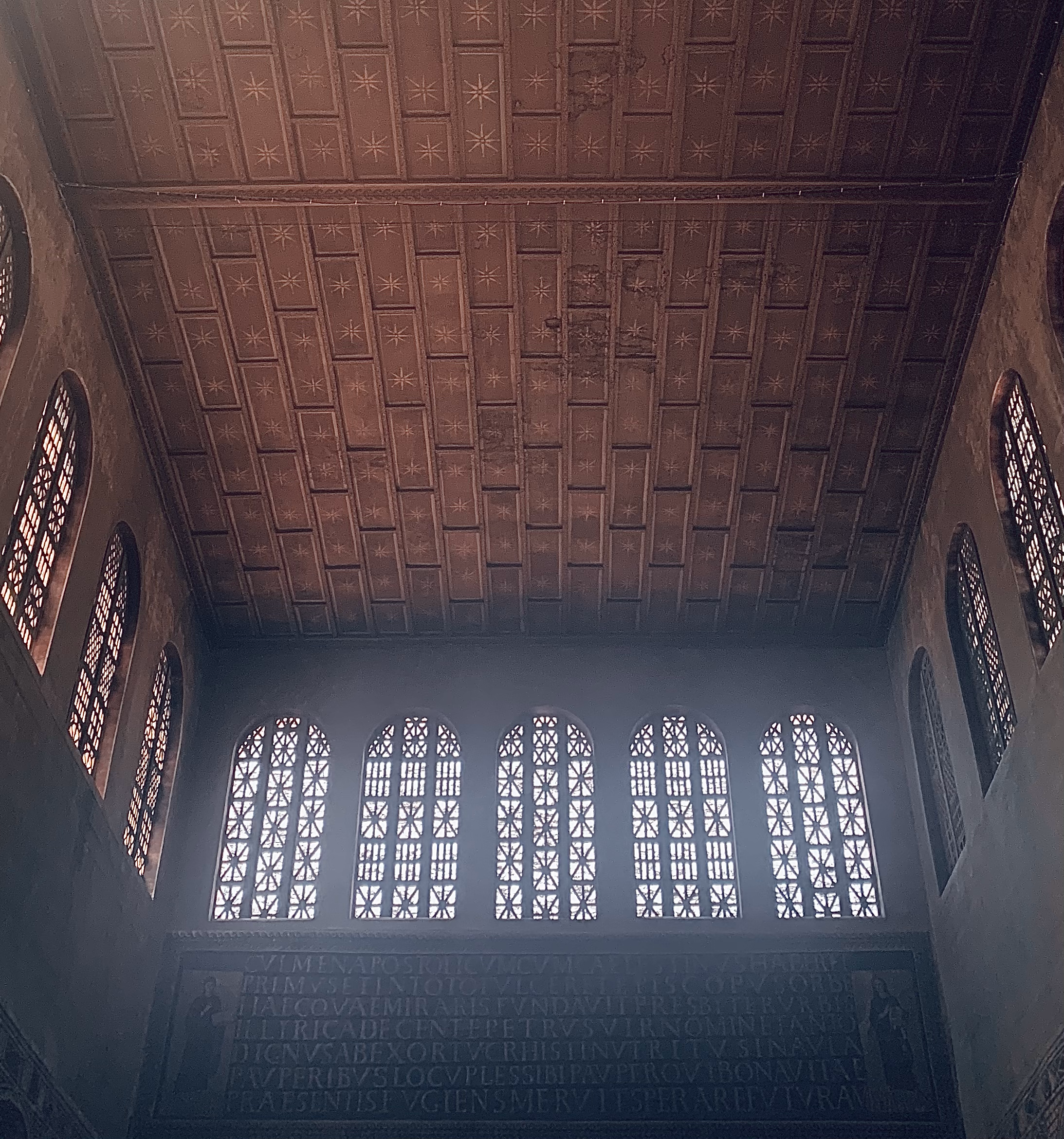
Newly constructed ceiling inside of Santa Sabina. Photographed by Reid Graham.
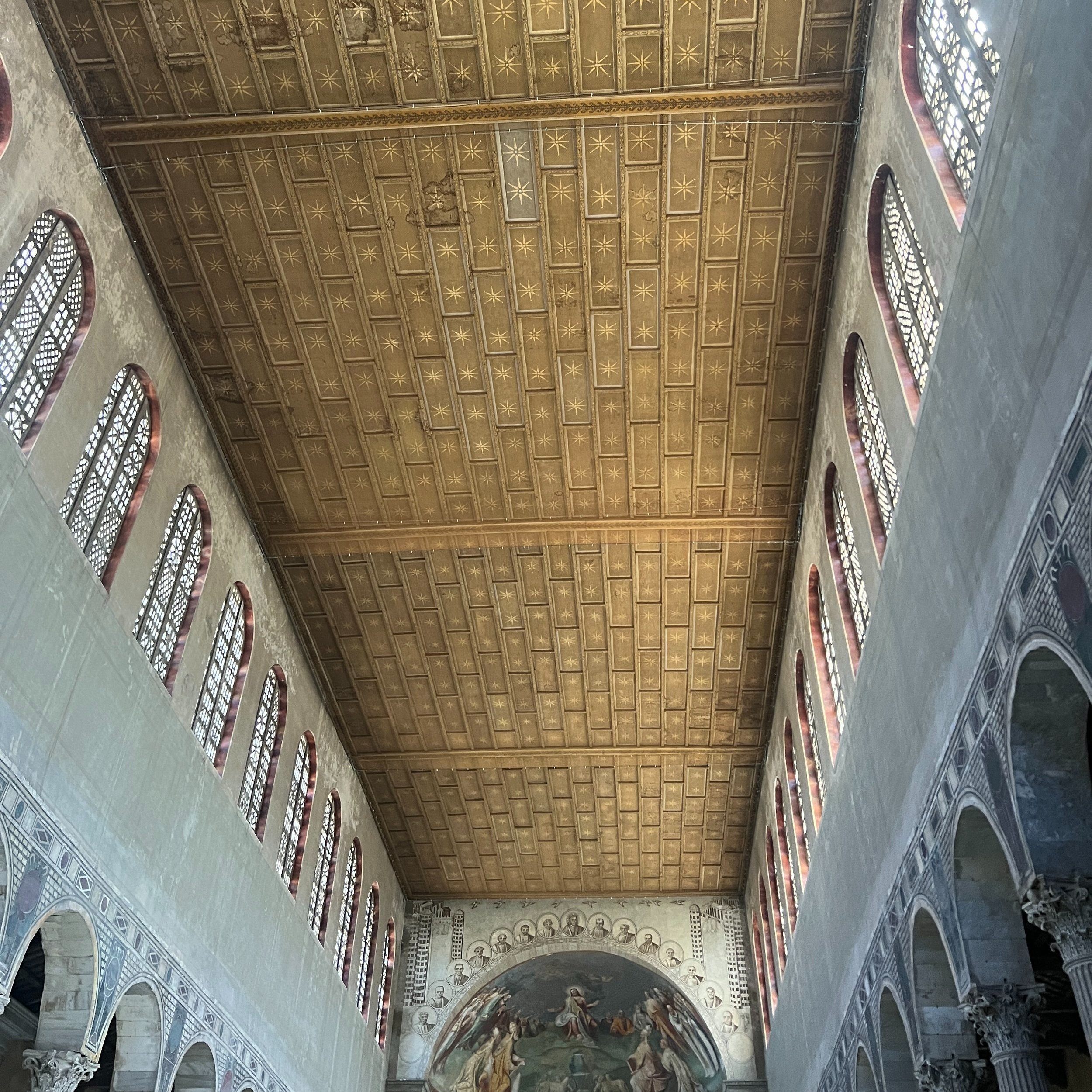
Newly constructed ceiling and windows at Santa Sabina. Photographed by Makenna Karst.
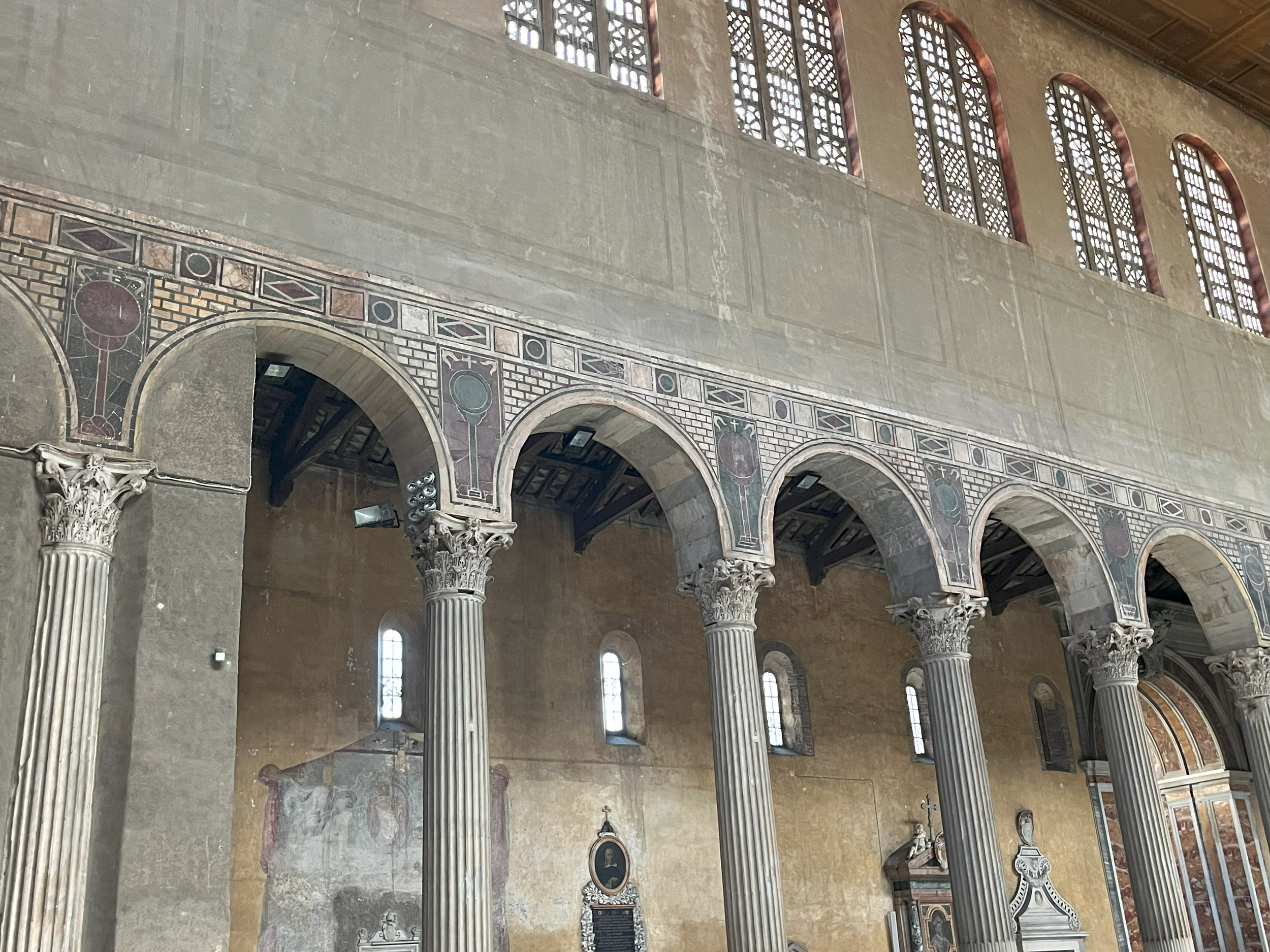
Walled in arches at Santa Sabina. Photographed by Luke Lynch.
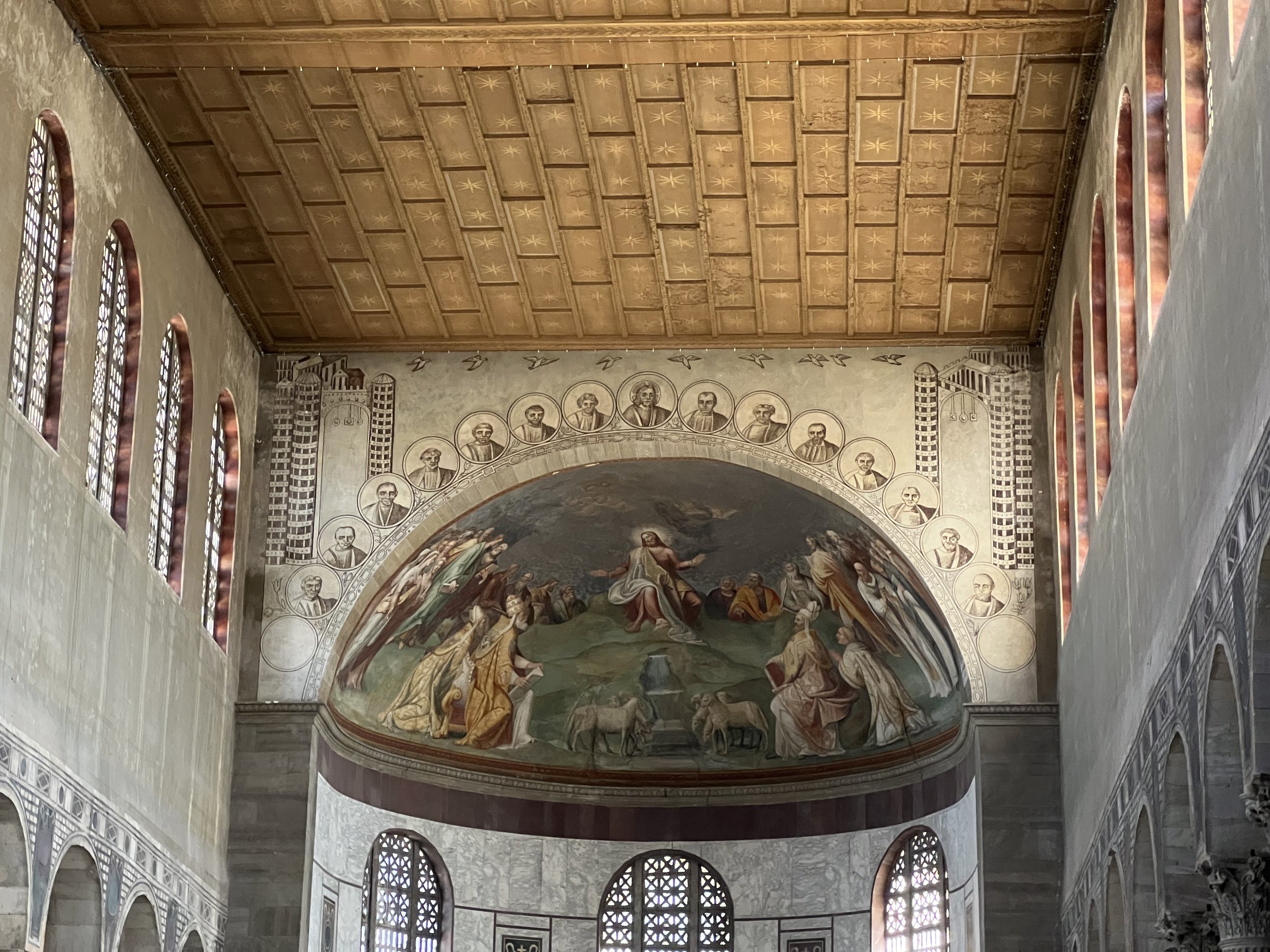
Apse at Santa Sabina. Photographed by Devin Chaldecott.
